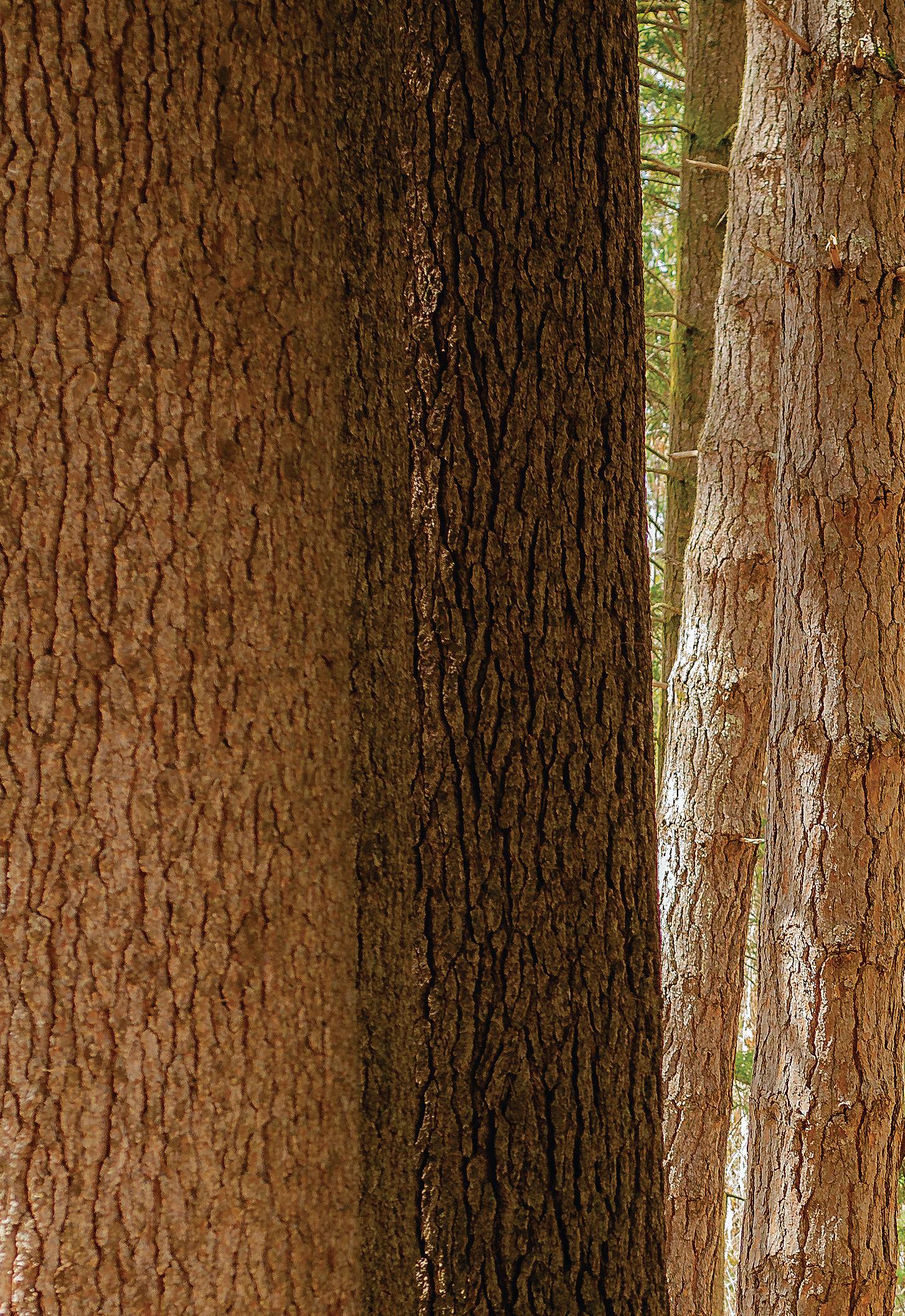

Beyond the forest
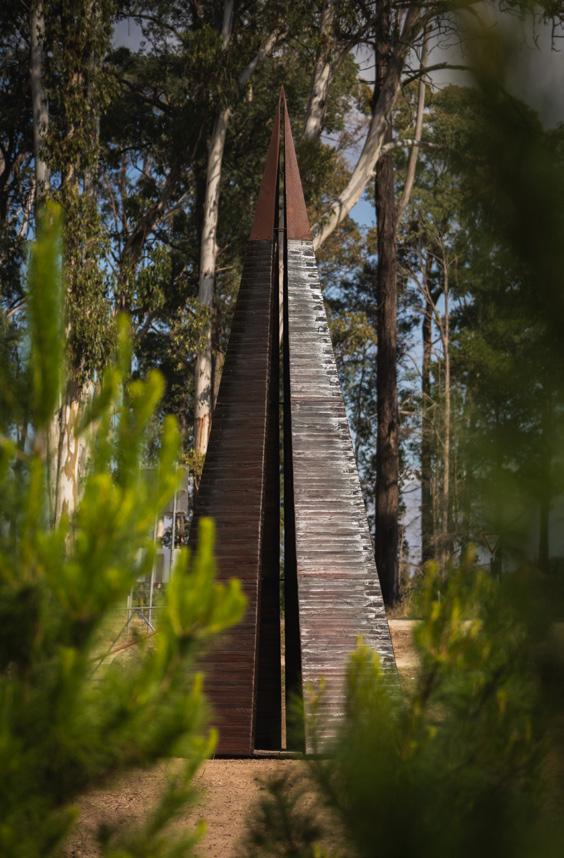
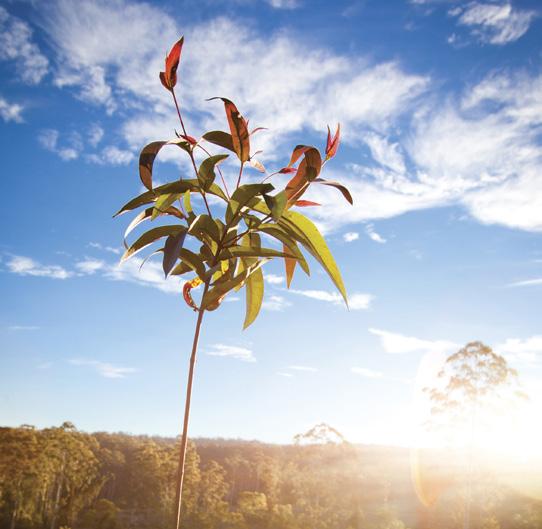
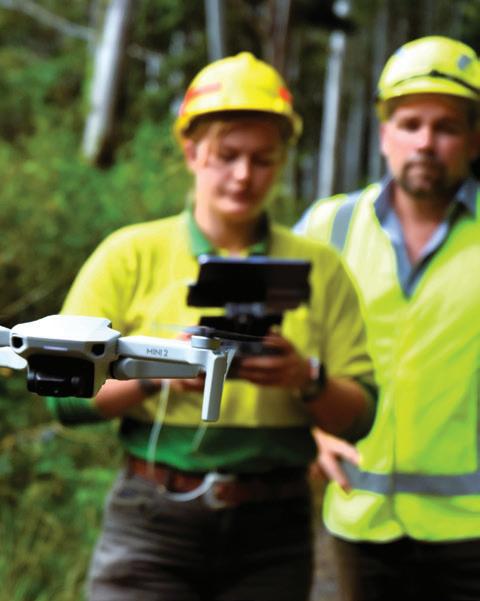
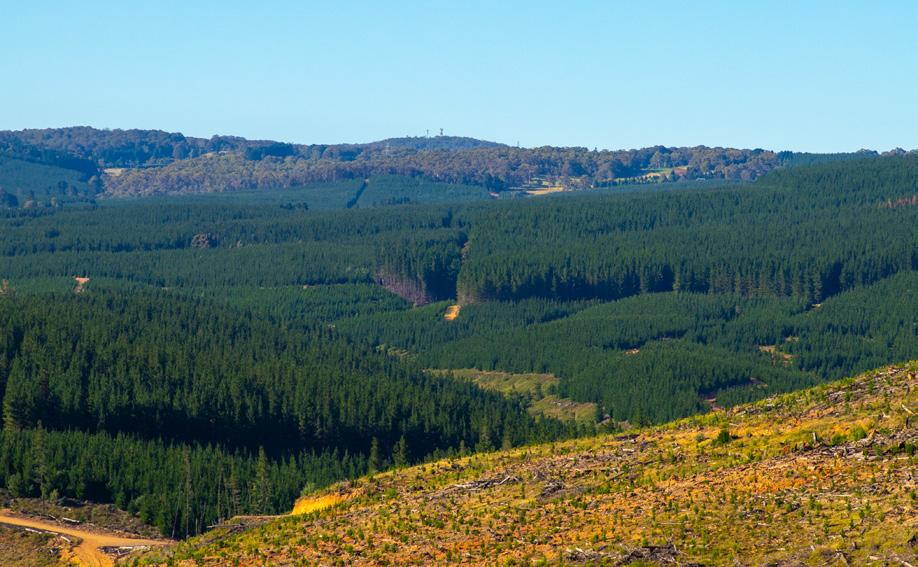
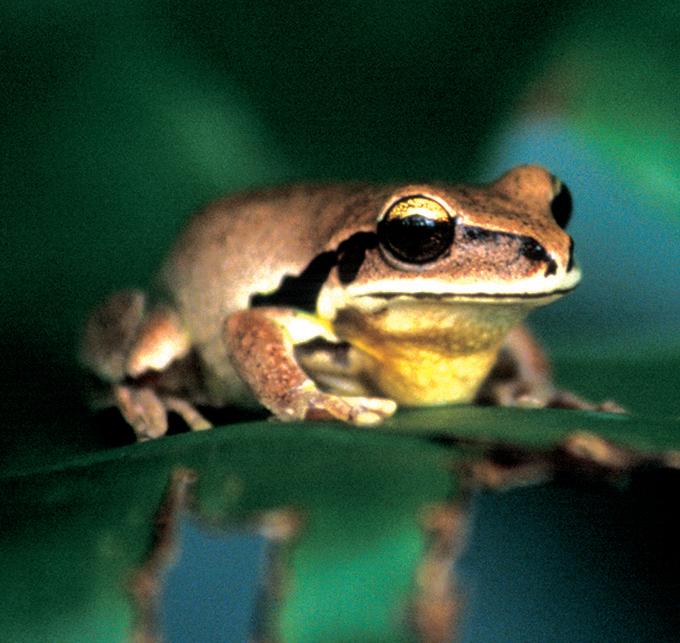
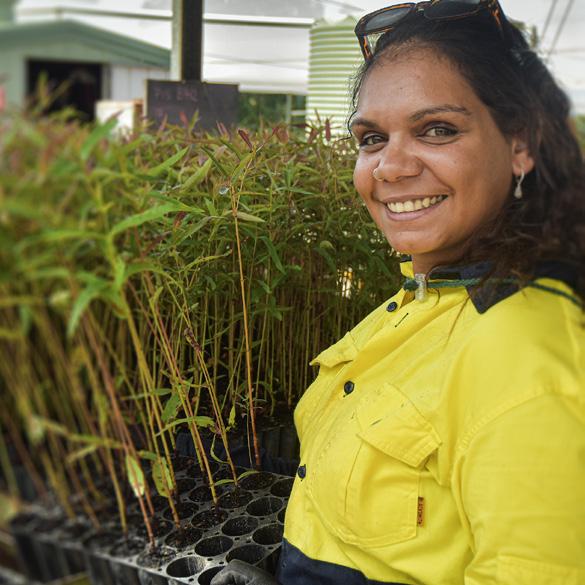
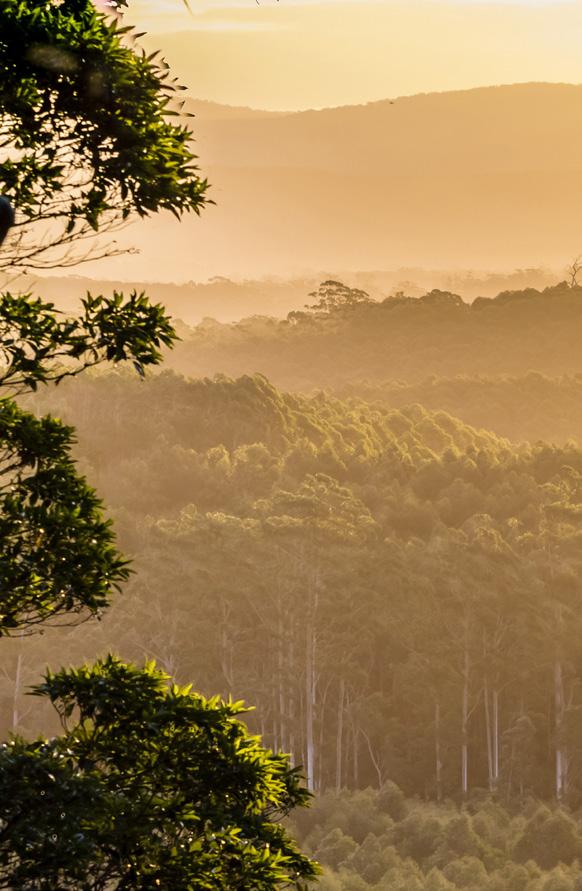
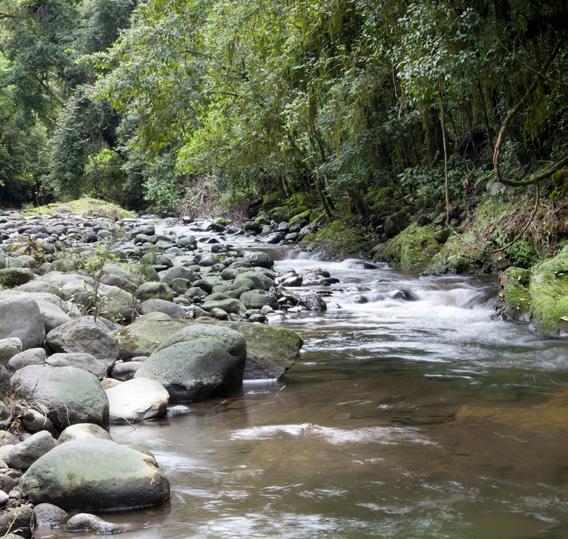
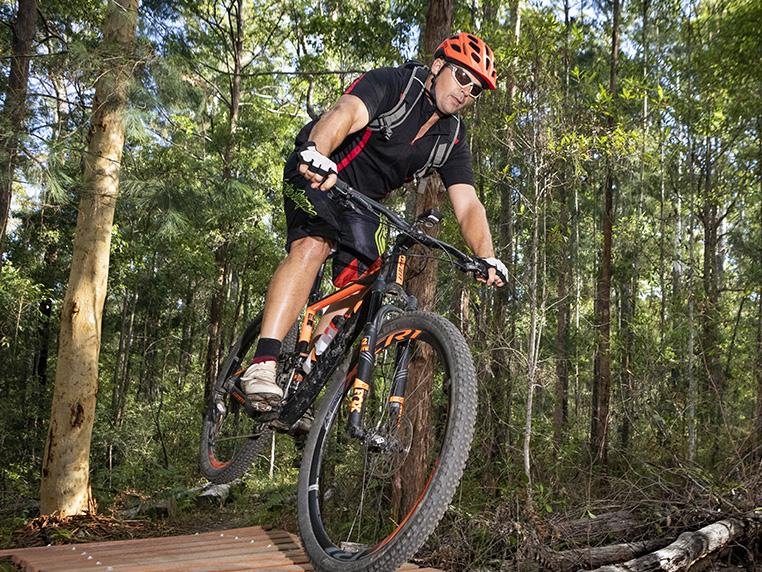
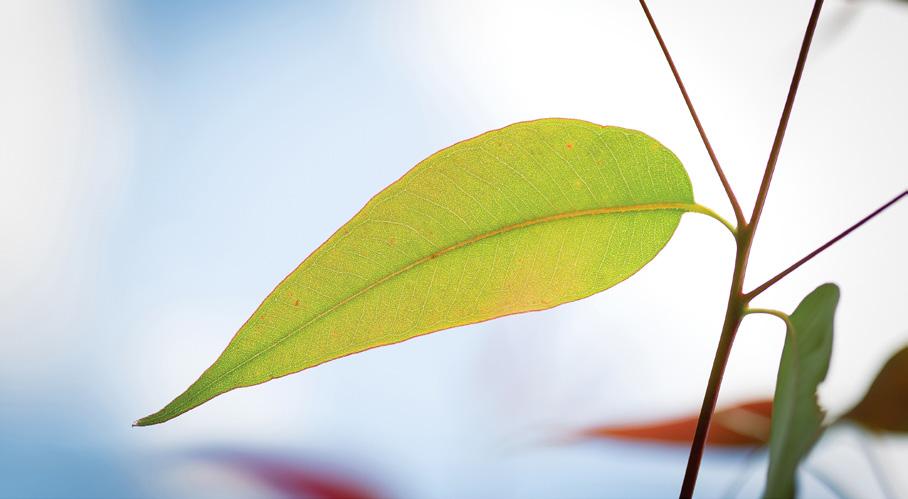
Acknowledgement of Country
Forestry Corporation of NSW acknowledges the traditional custodians of the land on which we live and work, and pay our respects to Elders past, present and future.
We recognise the connection to their land, their waters and surrounding communities and acknowledge their history here on this land.
We also acknowledge our Aboriginal and Torres Strait Islander employees who are an integral part of our diverse workforce and recognise the knowledge embedded forever in Aboriginal and Torres Strait Islander custodianship of Country and culture.
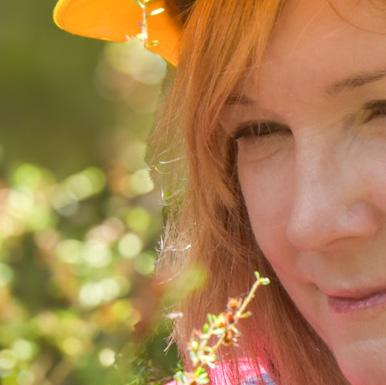
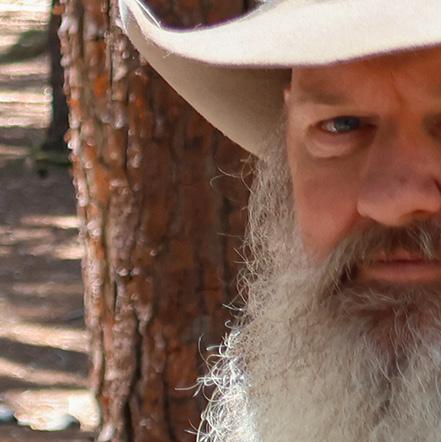
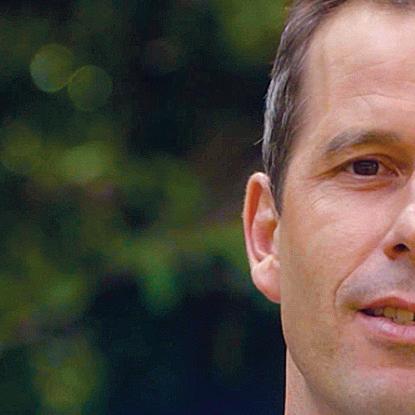
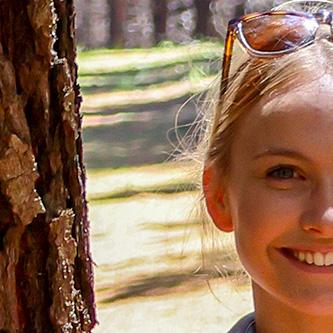
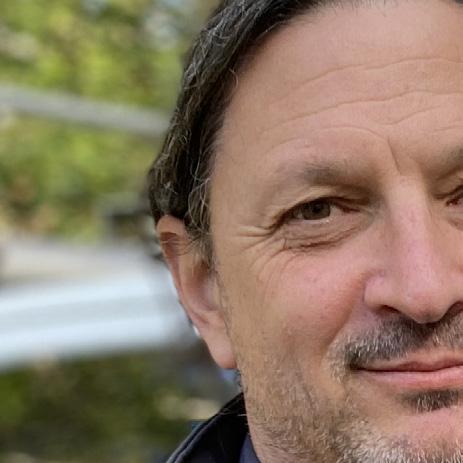
FCNSW1078
Journalism: mud-media.com
Graphic design: Ross Longley
Cover images: © Forestry Corporation unless otherwise credited. 07/25
© State of New South Wales through Forestry Corporation of NSW 2025. You may copy, distribute and otherwise freely deal with this publication for any purpose, provided that you attribute Forestry Corporation of NSW as the owner. The information contained in this publication is based on knowledge and understanding at the time of writing (July 2025). However, because of advances in knowledge, users are reminded of the need to ensure that information upon which they rely is up to date and to check currency of the information with the appropriate officer of Forestry Corporation of NSW or the user’s independent adviser.
Foreword
Forestry Corporation of NSW sustainably grows and manages the ultimate renewable resource – our State forests. State forests both contribute to and complement NSW’s conservation estate, delivering a range of benefits to communities, from access for tourism and recreation to protection of cultural heritage, fire protection and renewable timber production.
State forests are managed to deliver multiple benefits including environmental conservation, community access and tourism, and renewable timber products. Large areas of State forest are permanently protected and around one per cent is harvested for timber and regrown annually, with an estimated 40 million seedlings replanted or regrown each year.
Behind the sustainable management of our State forests, is the team of foresters, ecologists, tourism managers, logistics experts, fire professionals, heavy plant and equipment operators, scientists and nursery workers who make up the Forestry Corporation.
This collection of stories looks ‘Beyond the forest’ to explore the work done by these people to ensure sustainable management and outcomes that support the environment, supply timber for homes and infrastructure and contribute to the development of regional NSW
PUTTING EVERYONE IN THE PICTURE
It speaks to Forestry Corporation of NSW’s land management ethos that talented arctic wildlife photographer, ecologist – and nature lover – Bronwyn Ellis has worked for this organisation for 40 years.
Visiting with this quietly spoken champion of fauna and flora in the Kiwarrak State Forest on the edge of NSW’s coastal forest, is a frontline lesson about how much quiet expertise and knowledge exists within the Forestry Corporation team.
Bronwyn is slightly built and thoughtfully spoken. But, make no mistake. She is her own force of nature, and she has carved out a deeply meaningful career within this sustainable business.
She moved up the industry – from her earliest role in 1984 as Forestry Corporation’s (then) sole female Forest Ranger – taking subsequent positions as a field ecologist and (more recently on secondment) the environmental and sustainability team coordinating ecological monitoring programmes.
Since 1998 – according to Forestry Corporation’s GPS tracking – she has walked more than 3500km across forestry terrain (which is roughly from Cape York to Melbourne).

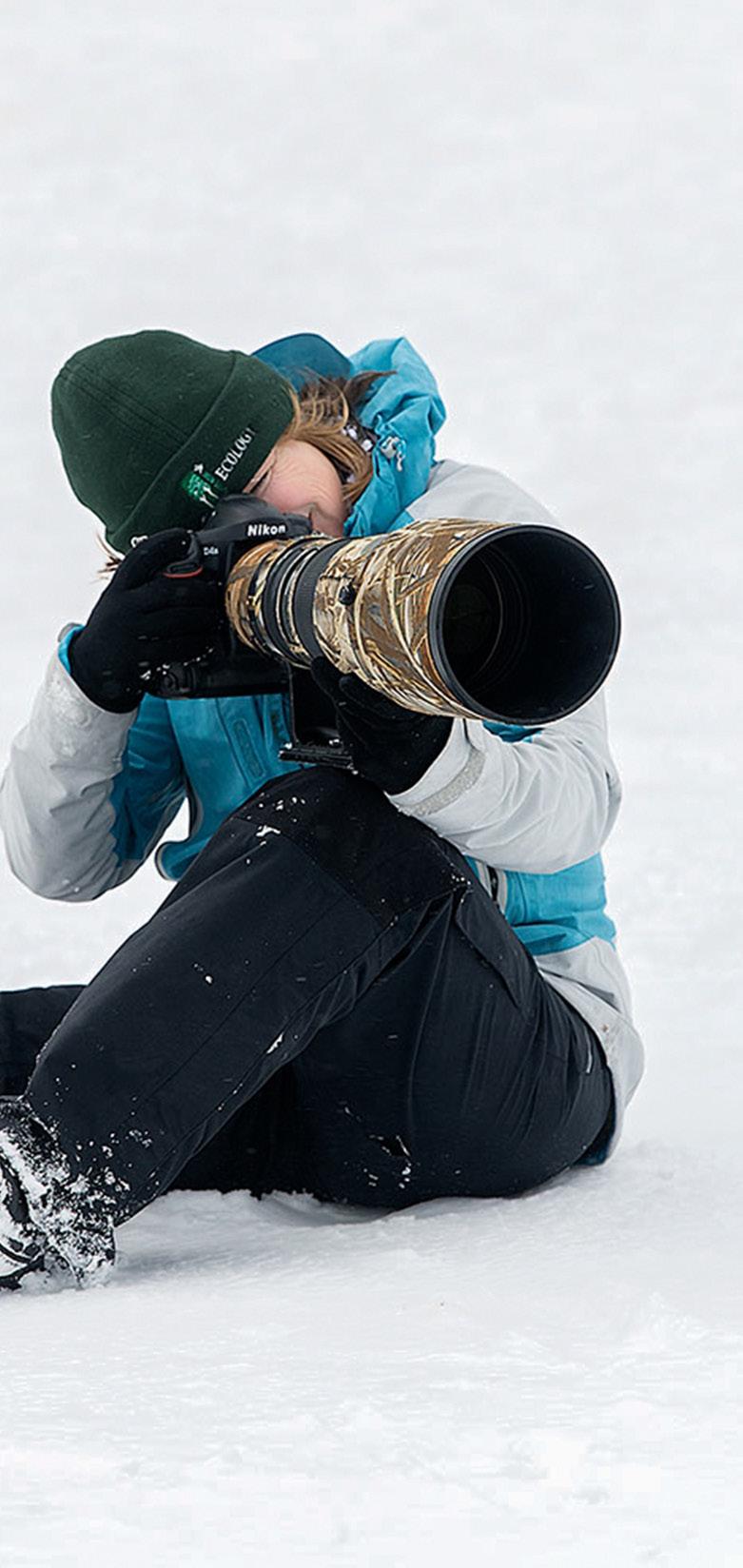
< Bronwyn Ellis is focussed on her next shot using a 500mm lens. This photo was taken by one of her wildlife photographic mentors, Alf Jacob Nilsen.
ELLIS
BRONWYN
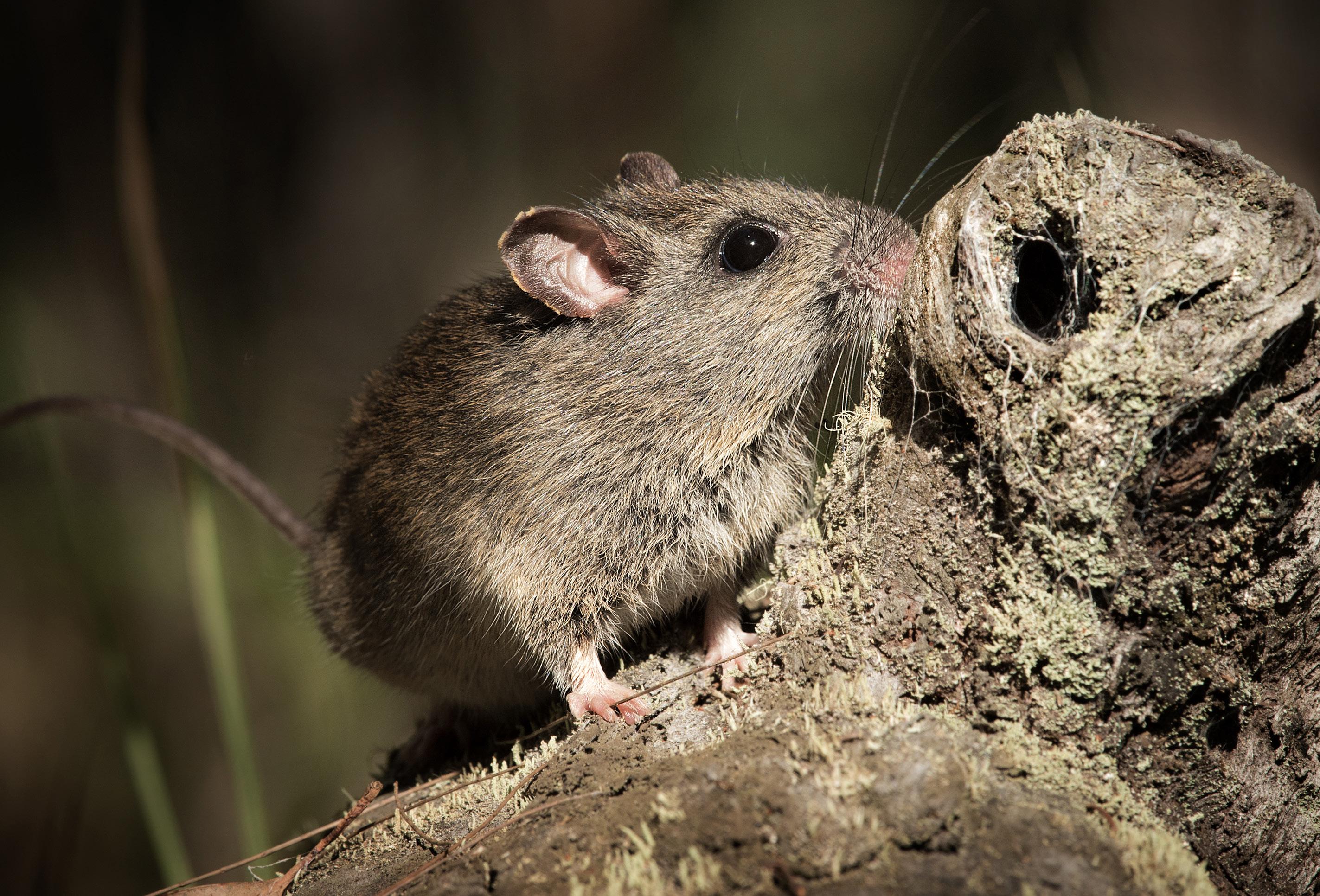
This Hastings River Mouse is an endangered native rat species that Forestry Corporation of NSW has on an annual (trap and release) monitoring programme. Bronwyn’s image was taken on a release.
PROTECTING THE FOREST
One of the endangered plants Bronwyn has a special connection to is a plant called Tylophora Woollsii. There used to be no records of it in her area for the coastal and hinterland forests near Taree and Wingham. That is, until Bronwyn found it for the first time in Comboyne State Forest on February 7, 2008.
“It’s a really tricky plant to identify. It looks similar to another common one, so I had to follow up and go back and try and find it flowering so that we could be 100% certain,” Bronwyn said. “As a result of that, a botanist has been back to my sites in the last couple of years and established conclusively that these plants are there. That is probably my biggest plant find.”
Looking for animals can be more challenging because they are (naturally) on the move. Forestry Corporation ecologists follow tree markings, scats, and droppings. They also use sound recorders and cameras, which are deployed for two weeks at a time to capture activity.
We do targeted surveys before harvesting operations as part of the planning process and we have an annual monitoring programme across the State,” Bronwyn explained. “Because we want to understand what is out there, and how the populations are going – in addition to identifying specific habitats that we need to protect.”
OWL SOUNDS LIKE WOMAN SCREAMING
Her current day-to-day efforts focus on finding and identifying flora and fauna in the native forest that is either unexpected or endangered between the coast and hinterland of the Manning and mid-north coast. Her work helps everyone understand what calls the forest home.
Bronwyn’s portfolio also involves some night surveillance work, and she says the sounds of the forest after dark are not as terrifying when you know which animal
noises swell and carry through the trees on the night air.
For the uninitiated, the call of the Sooty Owl sounds eerily like a “woman screaming” – which can be unsettling. However, to Bronwyn’s trained ear, it’s all part of the magic of the forest’s many and special secrets.
This is important work that she loves, because it protects any threatened species for future generations.
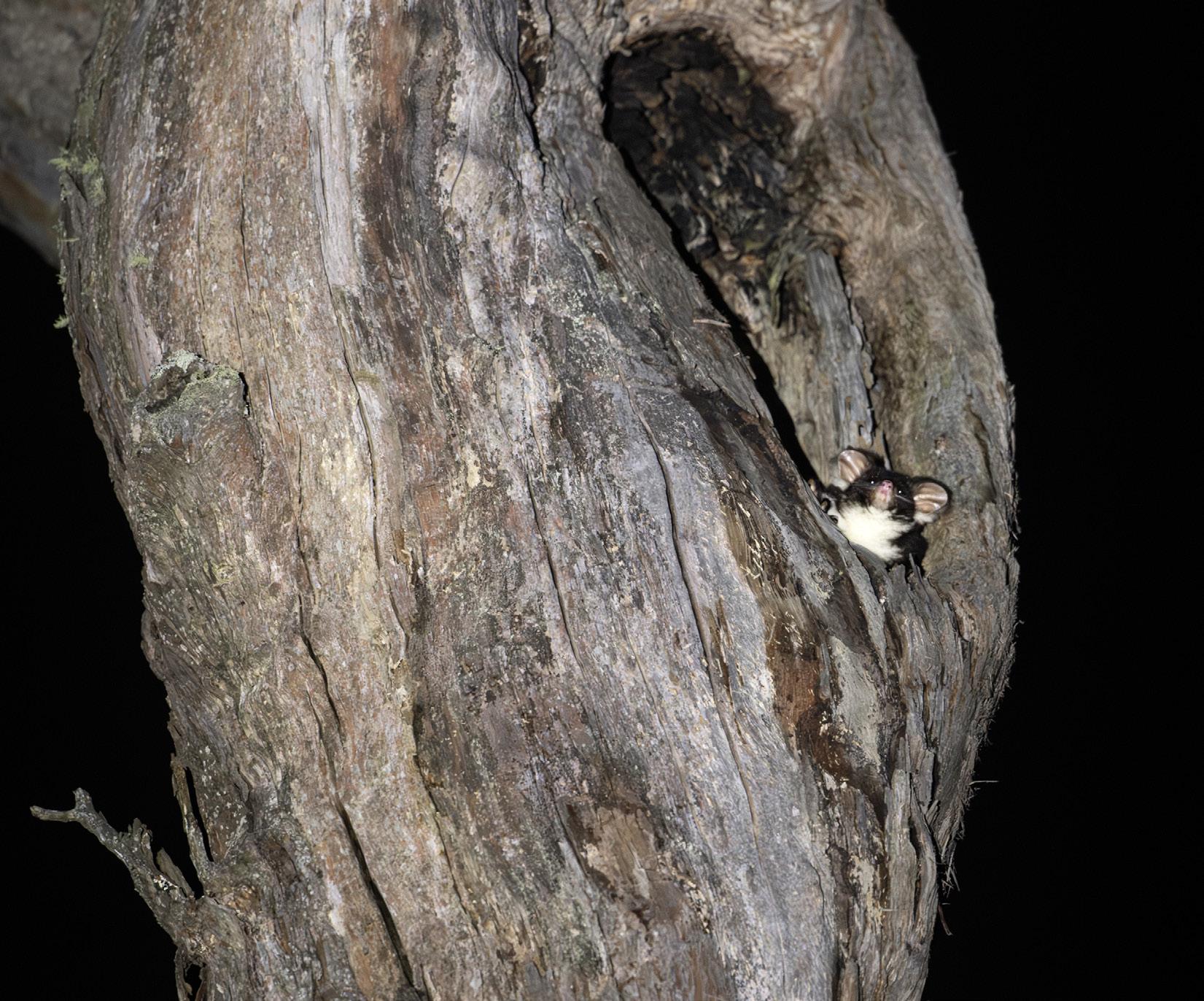
Bronwyn captured this Greater Glider emerging from its den during a night spotlight survey for Forestry Corporation of NSW. <
We want to understand what is out there, and how the populations are going – in addition to identifying specific habitats that we need to protect.
– Bronwyn Ellis
AWARD WINNING PHOTOGRAPHIC PASSION

Bronwyn’s passion for photography has been an unexpected win for Forestry Corporation. Her talent has been recognised multiple times by the Australian Photography Magazine’s photography awards.
She finished third in the 2017 amateur wildlife category for the magazine’s Australian Photographer of the Year competition (which includes 2100 entries from Australia and New Zealand). She has entered regularly – never finishing outside the top 20 in the nature category [including two entries finishing in the top-10 one year].
She photographed her portfolios in hostile, but compelling polar regions, which remain an ongoing fascination for her. Since 2014, she has travelled to Alaska three times, Antarctica twice, and arctic Norway (including Svalbard seven times) on wildlife photography adventures. She also visited Greenland in 2001 and 2023. She has photographed Brown Bears, Polar Bears, King Penguins, Albatross, Arctic Foxes, and Elephant Seals.
“With photography, I just get transported to another world and I’m so focused that time can just vanish,” Bronwyn said.
“Although, I mostly leave my camera at home on a workday here in Australia, unless I specifically want to try to photograph something. And, yes, there are lots of times when I wish I had my camera with me out here in the forest, but I have a job to do.”
Then there are the days when Bronwyn’s talent behind a lens makes her a welcome resource for the organisation. Her photographs of the Greater Glider at night – while geared more for surveillance than capturing artistic wildlife images –deliver meaningful results.
“A photo from a distance is a noninvasive way of getting an identifying sample of what’s out there,” Bronwyn said. “We look for them so that we can mark their position down on the Map App and protect their habitat.
“We also put out the bat sound recorders, to pick up the bat calls and a different one to pick up other calls like Koalas and Yellow Belly Gliders.”

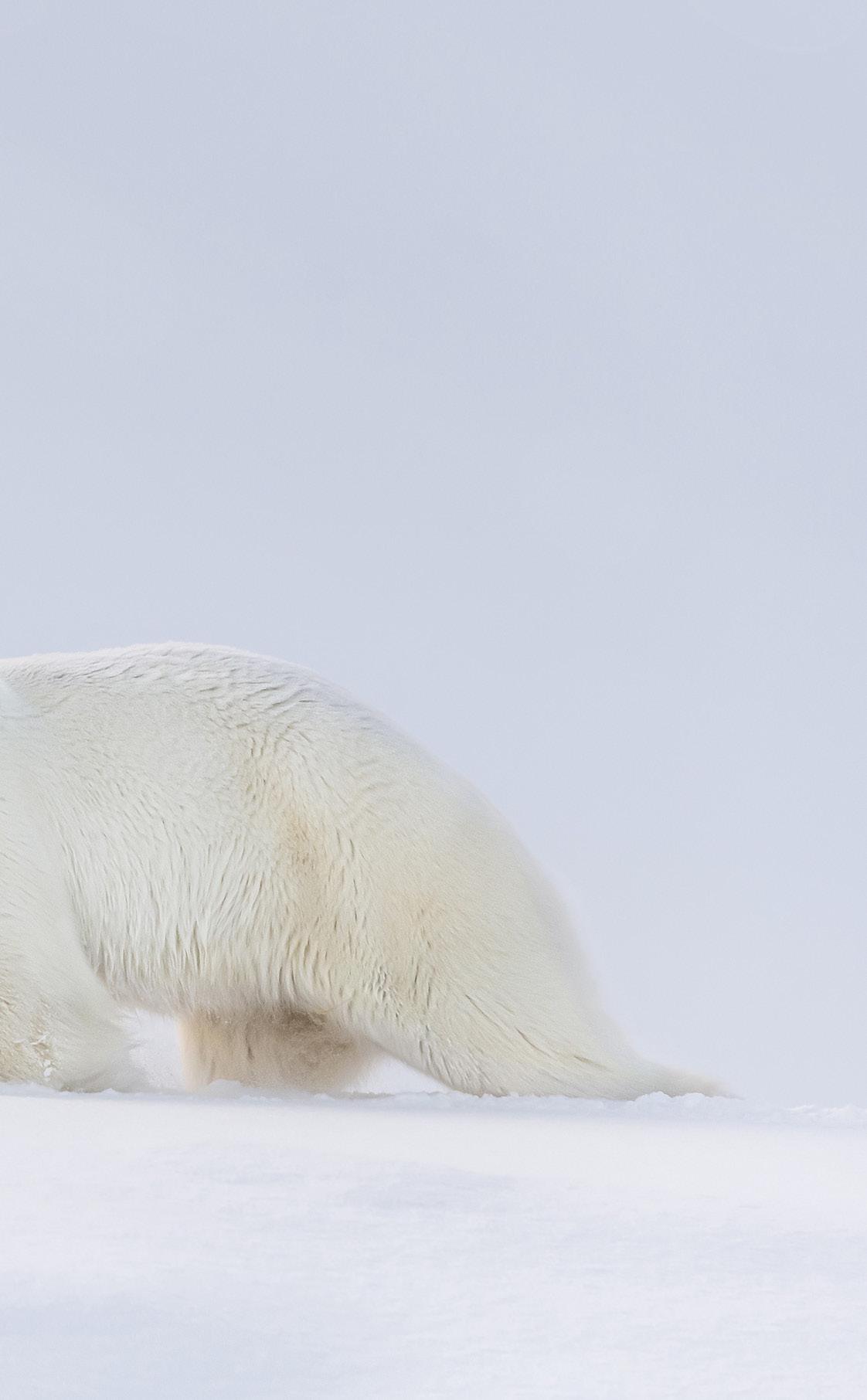

This photo titled, “Deep Snow Bear” is a special one for Bronwyn Ellis because of the personal memories associated with taking it. Photo: Bronwyn Ellis.
Bronwyn captured this timeless image of a young and curious female bear who approached their ship in the sea ice on a photographic tour of northeast Greenland in 2023. Photo: Bronwyn Ellis.
Three King penguins are captured in this powerful image that needs no words on the sub-Antarctic Island of South Georgia during a snow blizzard.
Photo: Bronwyn Ellis.

FUN IN FORESTRY
Bronwyn says sustainable forestry allows State forests to operate in unison with the public and its wildlife populations.
The public can enjoy mountain biking, dog walking, camping, and 4WDing for free. Roads crisscross the forest for fire management, and people come and go checking bee hives and cattle grazing. In amongst that, Forestry Corporation produces timber for local mills – contributing to local employment opportunities – producing floorboards, decking, and power poles.
“That is why our monitoring is so important. We need to know what the
animals are doing, so we can protect their habitat, and make sure they are here for all future generations,” Bronwyn said.
Forestry Corporation’s dedicated work in this arena is rarely publicly celebrated, despite it having a team of ecologists on the ground within its land management operations.
“As forest managers we care about the forest and the wildlife, and we follow the rules to keep it all in balance by understanding the forest, and making a difference on the ground,” Bronwyn said.
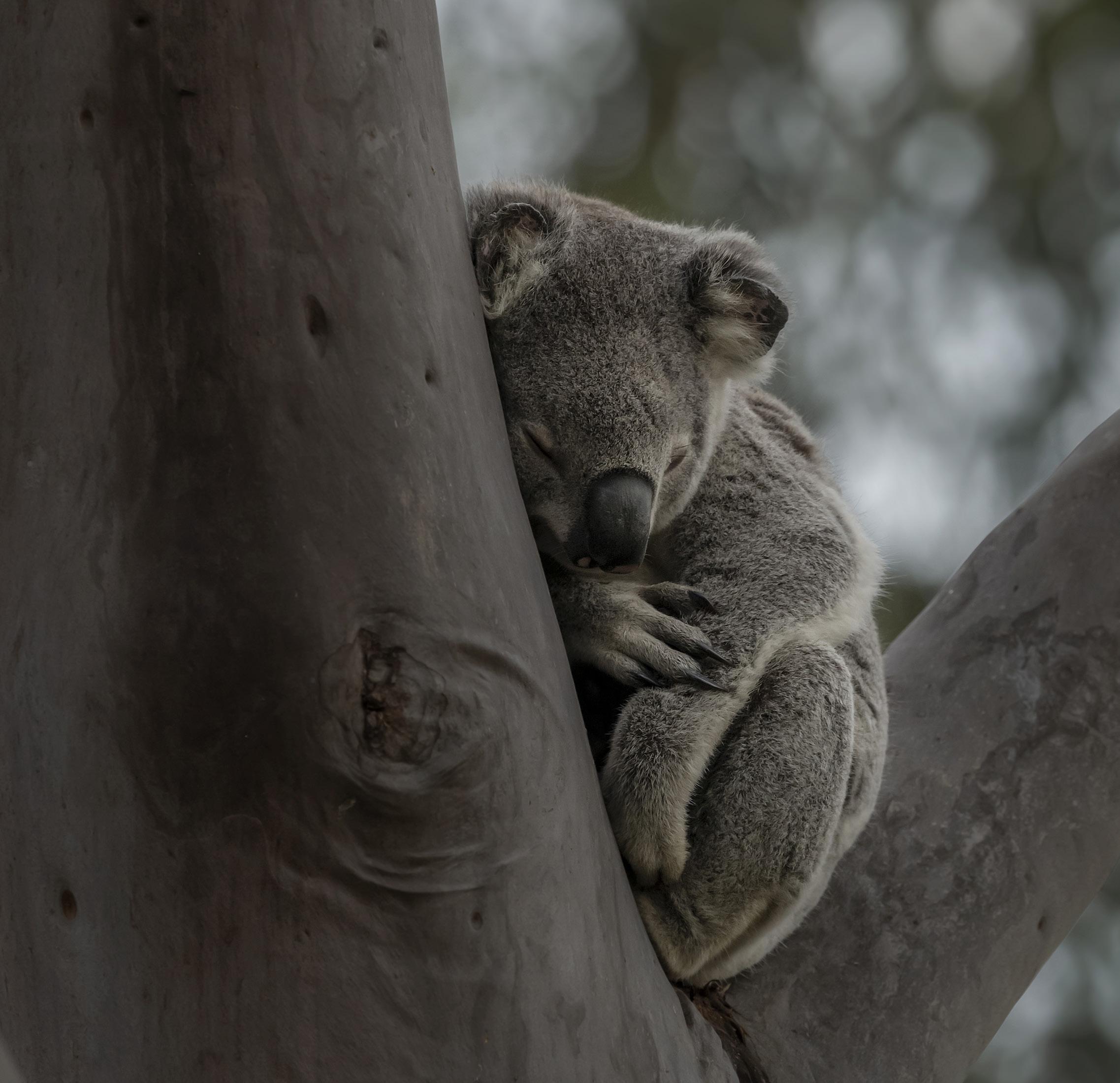
Eating leaves is an exhausting business.
Photo: Bronwyn Ellis.
FORESTRY CALLED…
Bronwyn says working in forestry has been a calling for her.
“This will sound a little weird,” Bronwyn says. “But I had a dream about it when I was a teenager that I was up in the mountains driving around. And, then after I left school, I applied for a ranger’s job and got it.”
While at that time she was a woman working in a man’s world, her straightforward work ethic has been part of the pioneering example that has helped open the door for more women, who today confidently shoulder leadership roles within the organisation.
Nailing down what is special about the forest for her remains a vast subject.
“What’s not special about it?” she smiles.
“It’s a really nice place to be in. It’s the birds, all the animals, the koalas, the gliders, the owls (that I am particularly fond of). I think the Sooty Owl [the one with the cry that sounds like a “woman screaming” mentioned earlier] is my favourite owl.
“I have one of the best jobs because I get to work with nature, and I like finding things. Whether its unique fauna for an area, or special plants that are unusual, rare, or listed as endangered.”
Bronwyn says it is gratifying that her work allows the forest to be managed sustainably today and into the future.
Retirement isn’t in her vocabulary, and she is looking forward to another decade making a difference.
She is proof that when you love what you do, you’ll never work a day in your life.
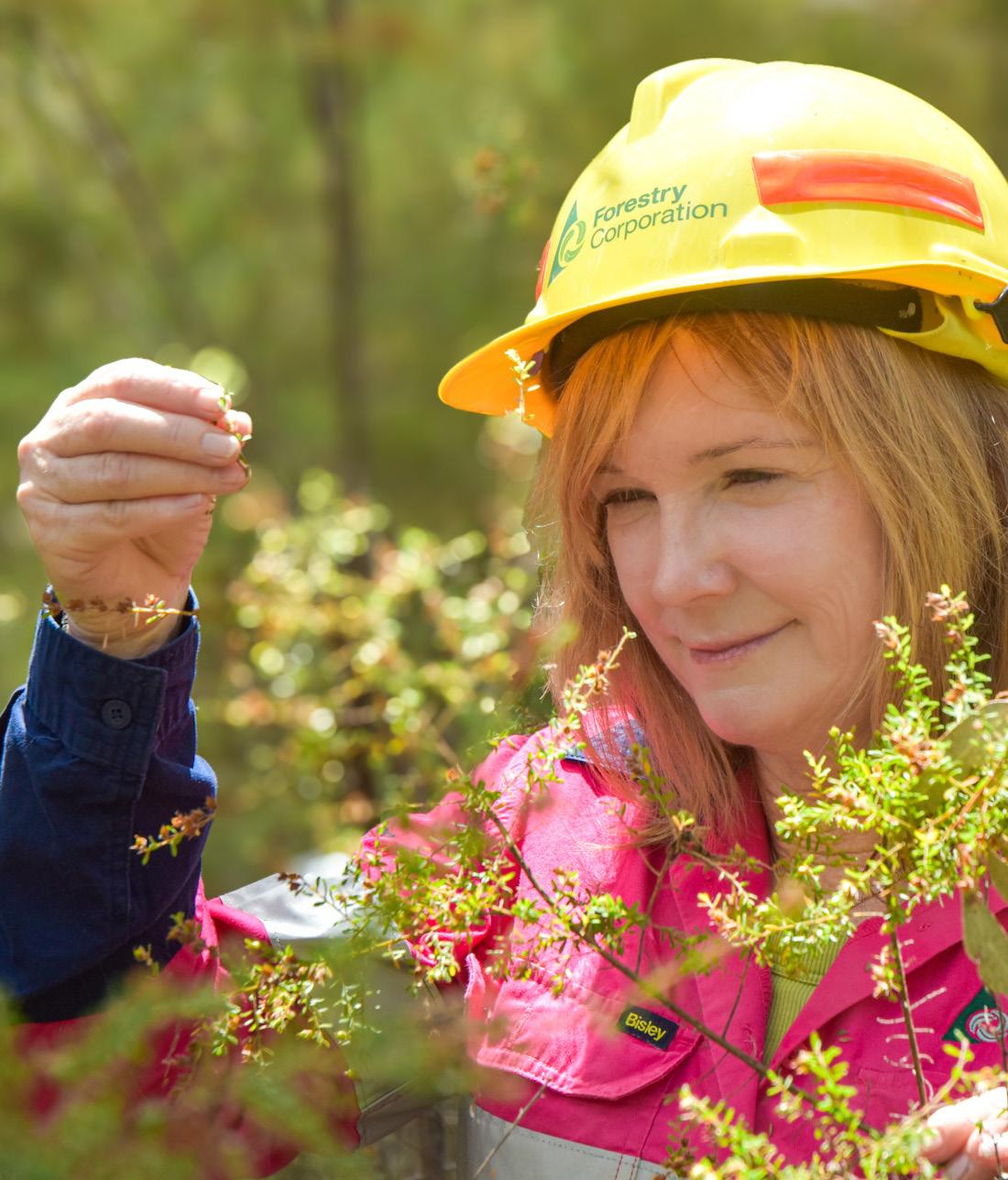
What’s not special about it?
– Bronwyn Ellis
Bronwyn Ellis had a dream that she worked in forestry when she was a teenager, and she’s now been living that dream for 40 years. <
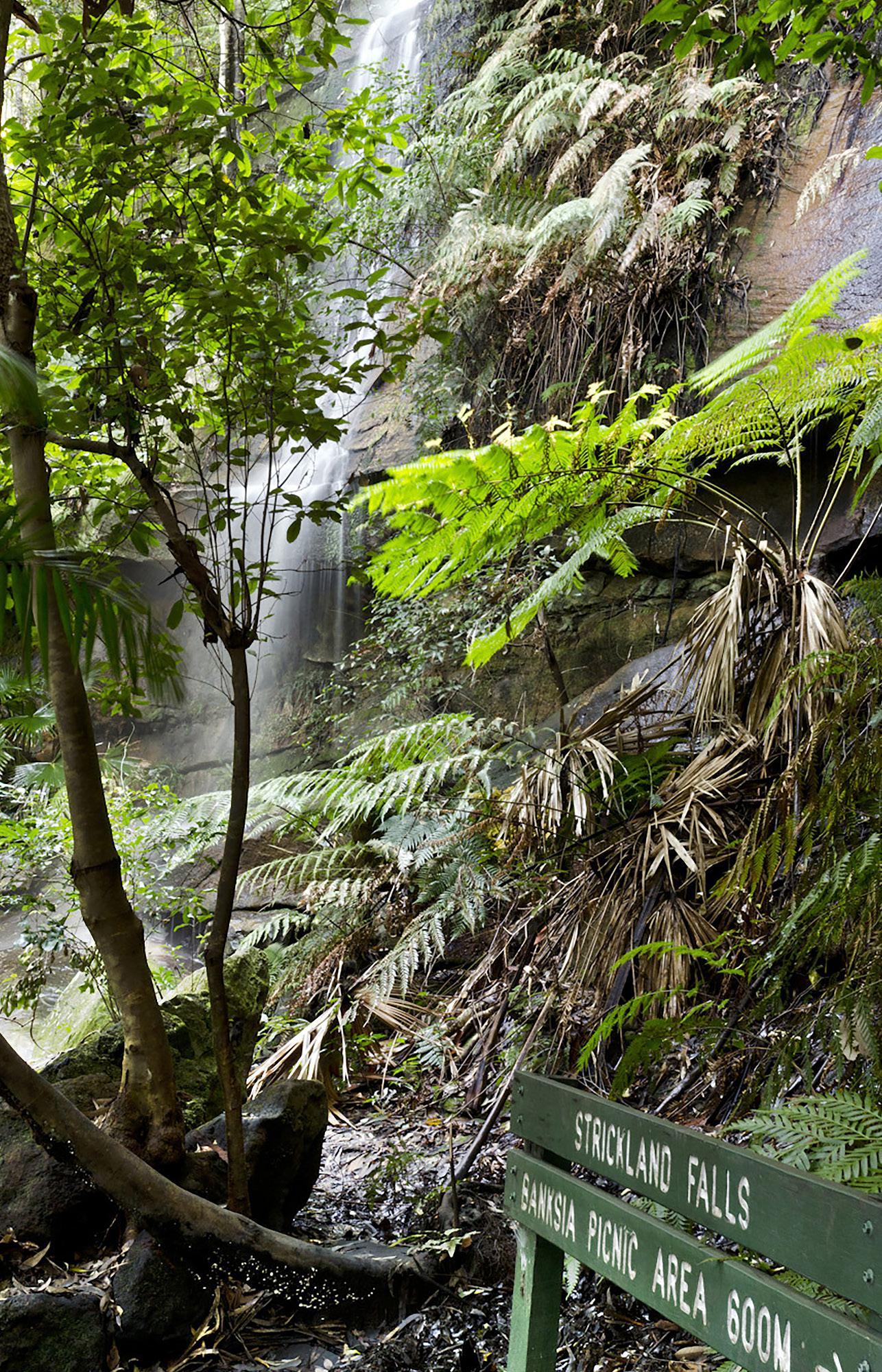
A PERFECT MATCH
JOHN BERRY
RECREATION
FACILITIES CO-ORDINATOR
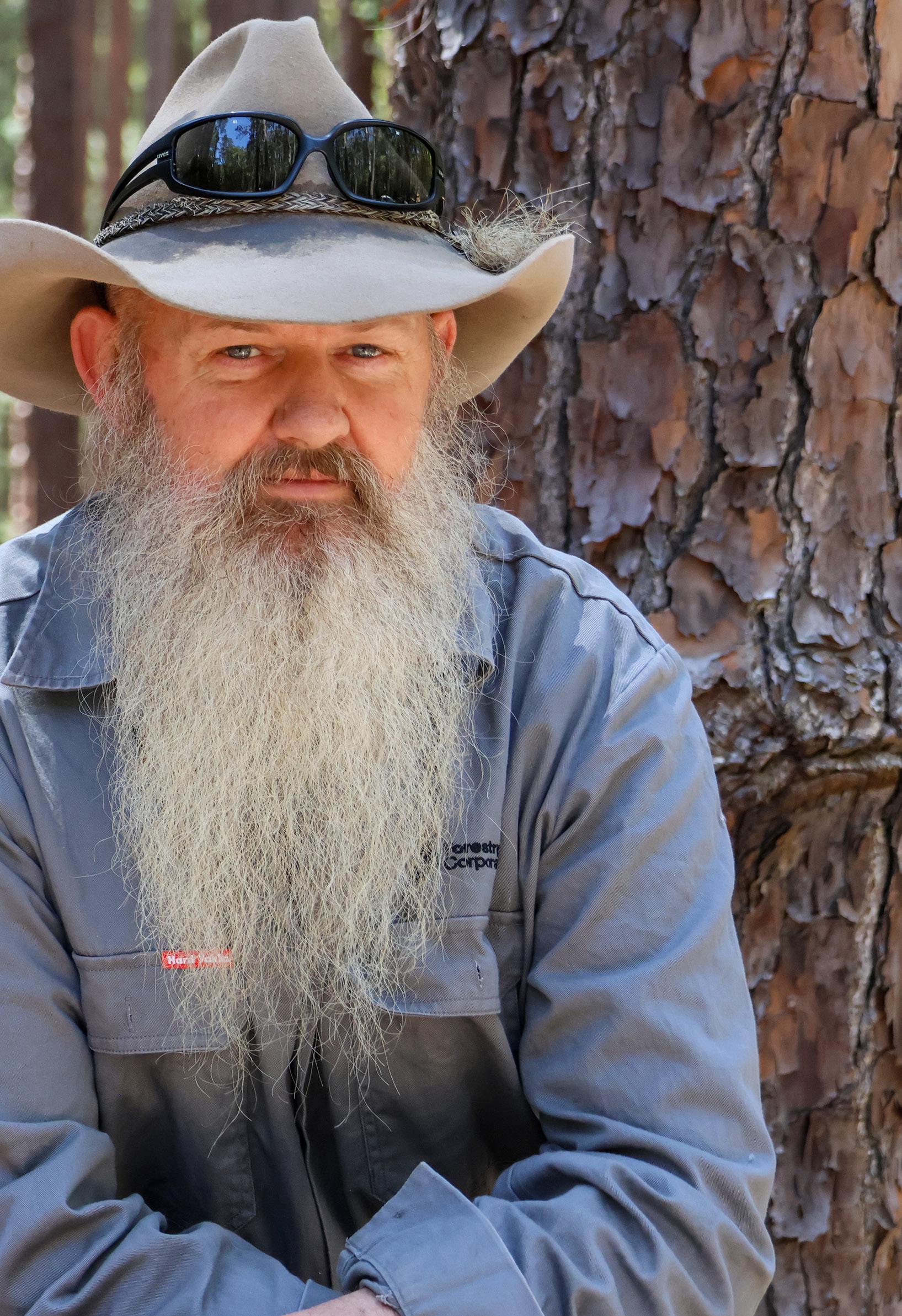
When you visit the forest, it’s easy to take for granted that it includes everything from worldclass destinations through to a lone picnic table in a cleared camping area.
Eco-tourism within Forestry Corporation of NSW is a multi-faceted movement which takes vision, understanding, and execution.
Meet some of the team behind these tourist experiences in the north coast’s forests…
SOME PEOPLE FIND THEIR CALLING, AND SOME CALLINGS FIND THEIR PEOPLE.
John Berry’s calling found him when he was included in a “Work for the Dole” programme with Forestry Corporation of NSW. He had worked in security for a decade, and after moving back to the coast to give his family more opportunity, he struggled to find employment for more than 18 months.
Raised on a mixed farm, he had studied horticulture with an eye on environmental work, but finding work proved elusive. He was working casually doing fencing jobs and weekend work. His wife, Esther, encouraged him to approach the programme with an open mind. It involved repairs and maintenance within the forest under the guidance of a forest ranger.
This is my office. I like the varied forest, the people you get to talk to, and that generally 98% of the people who come here come to enjoy the area. That’s where we get our satisfaction from.
– John Berry
It didn’t take long for the ranger overseeing the programme to notice John’s building talent, practical vision for projects, and his ability to lead, unite, and mentor others. Within six months, John moved into a leadership employment role within the programme, which he held for five years. During that time, their greater work was acknowledged by a Prime Minister’s Work For the Dole Achievement Award (in the caring for the Environment category). John’s work was personally acknowledged with a Highly Commended as the best Supervisor in the 2002 “Work for the Dole” section of the Prime Minister’s awards.
When the programme ended, John joined Forestry Corporation as a Ranger – still dealing with maintenance and construction.
Today, John is exactly where he should be. He is the Recreation Facilities Co-ordinator for the native hardwood forests, based out of the Mandalong Depot through to Tumbarumba, Styx River (Armidale), and the Coffs Harbour area.
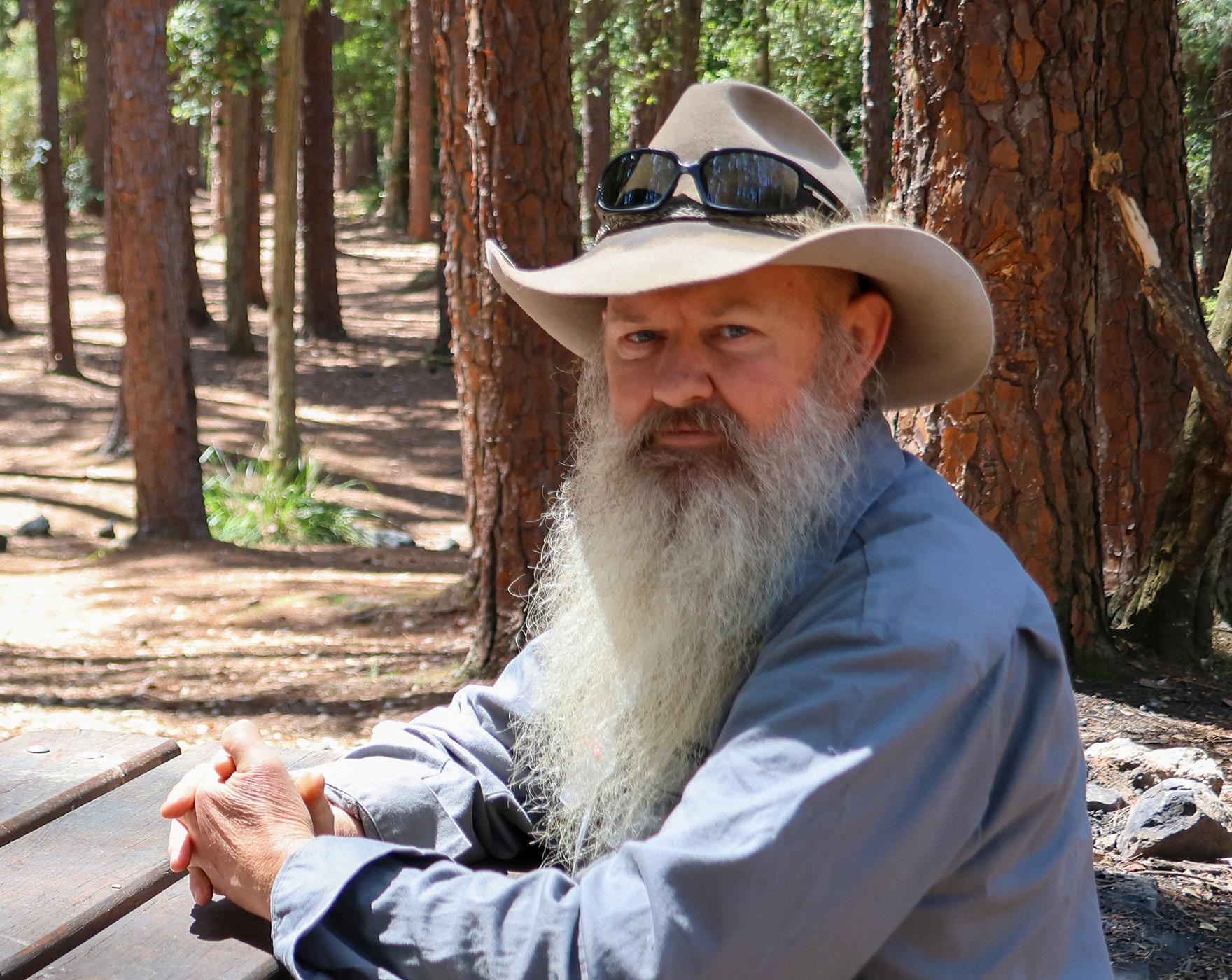
OPEN AND FREE
The forest is open and free to the public to enjoy camping, walking, lookouts and an increasing amount of adventure activities, which can’t always be enjoyed in other locations. They include mountain biking, horse riding, four-wheel driving, treetop adventure rope courses, archery, and recreational hunting. Offering this range of activities – including campsites where visitors can learn about dreaming stories and indigenous culture – takes some managing.
John is tasked with keeping the forest visitor areas in pristine shape for the public, in terms of repairs and maintenance. He is also a big part of the team which continue to create innovative and practical areas for niche groups to enjoy within the forest.
These areas meld into nature, elevate the visitors’ experience, while simultaneously promoting and protecting the wildlife who call the forest home. It also promotes using the timber which comes from these well managed forests. It’s an unassuming but critical role within this natural playground for its visitors out of Sydney, the Central Coast, Newcastle and further afield.
“The public are our guests here, and we try and explain the multi-use forest message as often as we can,” John says. “Forestry Corporation is employing people, we’re growing trees for biodiversity and conversation, we are supplying timber to build houses through ethically grown timber, and we manage fire as an obligation.”
A practical example lies within the Bago State Forest in southern NSW. John and his team have customised an area to cater for horse riders in the forest. Much of that inspiration comes from John’s keen observations as he traverses his day-to-day tasks.
“We have put in quite a few horse yards so the riders can camp overnight and know their horses are safe and comfortable,” John said.
John Berry was part of the team that created “The Little John’s Tree Frog Trail” in the Olney State Forest. The team made use of a quiet section of the forest which had been degraded by vehicles. The shift in the soil allowed them to create these private dams.
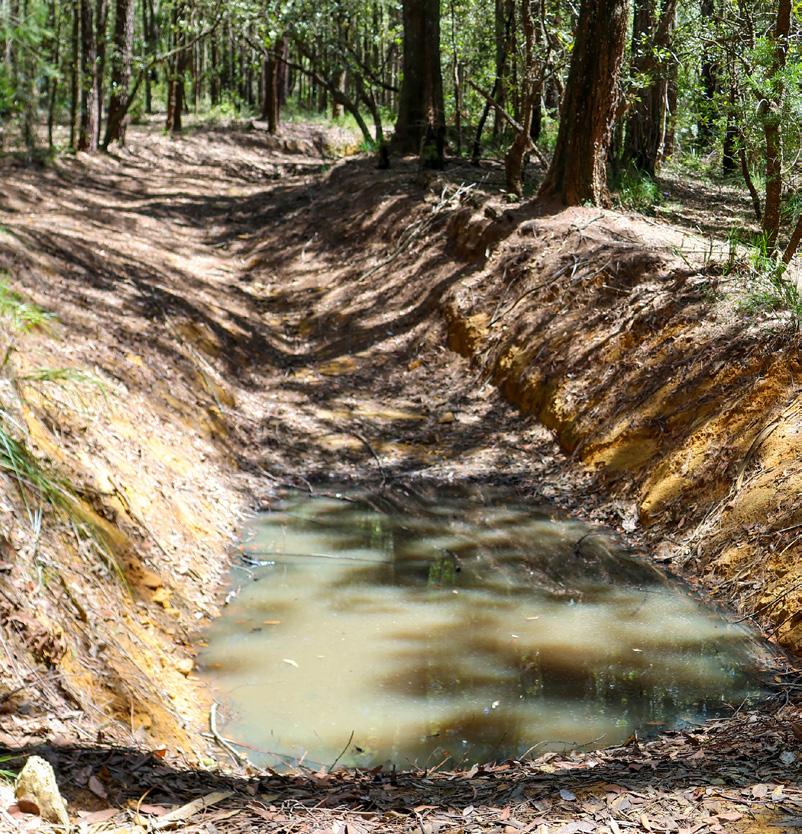
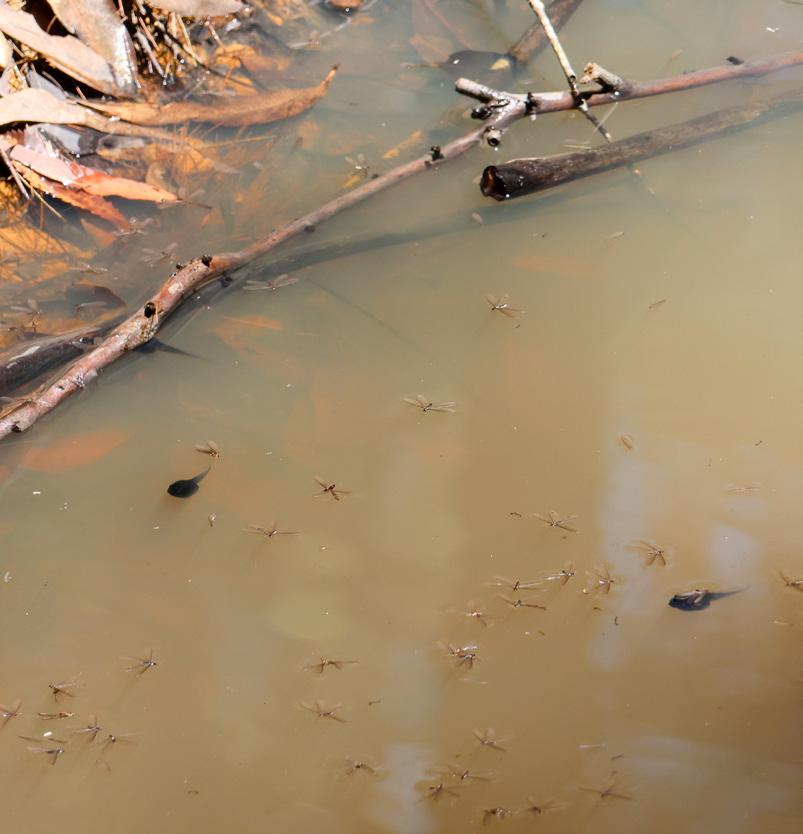
“We further customised that area because the horse-riding community likes big fireplaces and open flat areas. And, more often than not they have their own facilities within their vehicles.”
In another project, John was part of the team that created “The Little John’s Tree Frog Trail” in the Olney State Forest. An additional breeding habitat for threatened frogs of the Watagans was built using a quiet section of the forest which had been degraded by vehicles. The shift in the soil allowed them to create private dams, and – by adding a scenic walkway – it is now home to a thriving metropolis of busy tadpoles and an educational wildlife experience for visitors.
“It’s a flourishing species in here now, and it’s exactly how we envisioned it working,” John said. “The frog dam builds connectivity for genetic diversity and threatened species. The walkway to it is only 300m, but now there is a university research programme studying it, and school groups come through routinely.”
This pond in the Olney State Forest is now home to busy, growing tadpoles and it doubles as an educational wildlife experience for forest visitors.
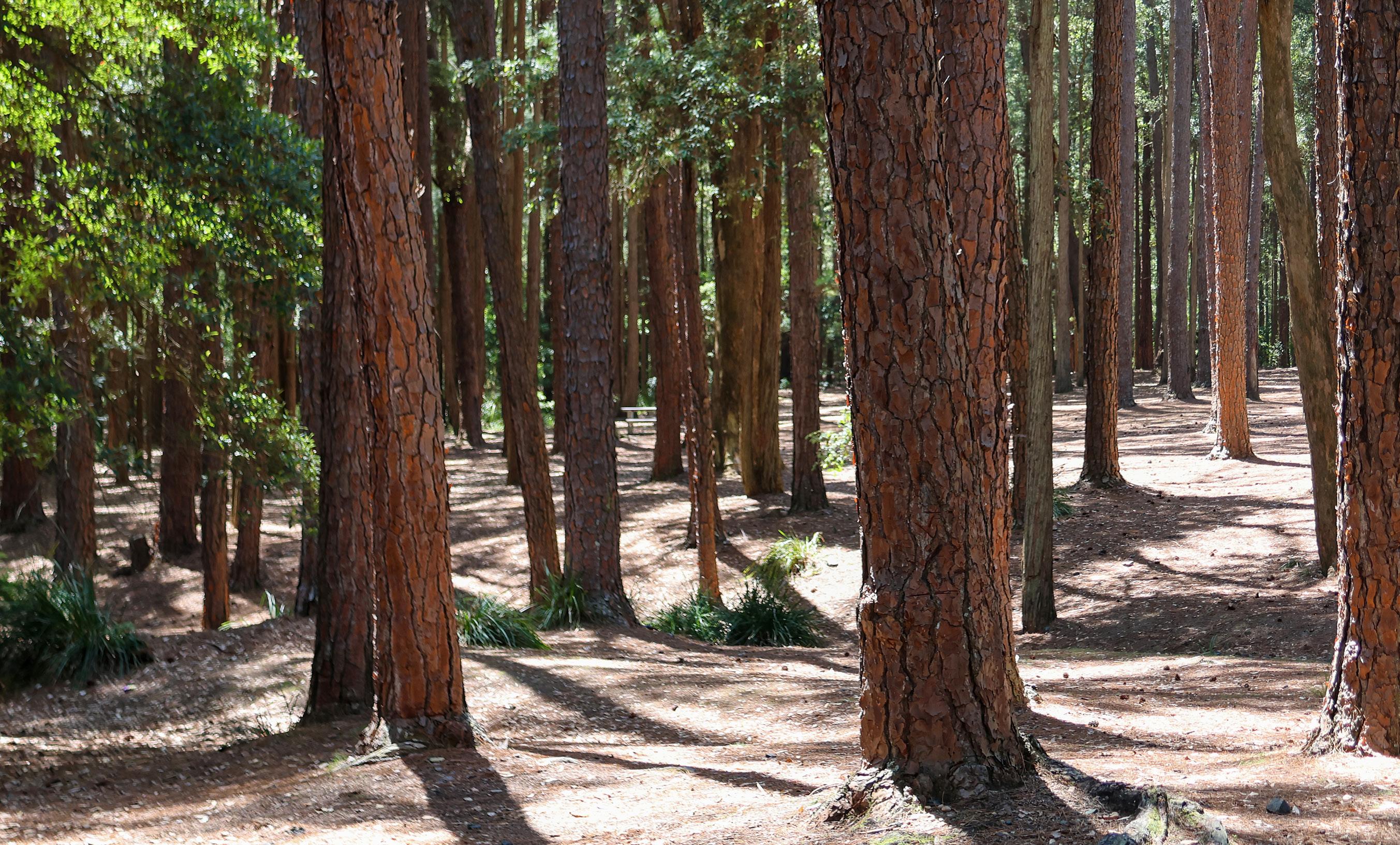
“I do”
They are also refining and expanding an area which has become a popular wedding destination among the trees.
Alex Capararo Partnership Leader for the Central Coast and Hunter issues the wedding permits, and he expands on their thinking.
“The weddings are probably becoming more common in the big picnic area, because it’s a cost-effective alternative, it’s stunning here, and it’s always cooler under the tree canopy,” Alex said.
“The forest has its own microclimate, plus it’s elevated, and you’ve got a sea breeze. We’re going to build some arbours and timber shelter. Right now, if it rains, they need their own gazebos. We’re working to improve this experience.”
Juggling all these visitor uses takes vision, thought, and smart action.
Trail bikes also love the forest, and it can be at odds with the people searching for solace…or a wedding venue.
“We do have a lot of trial bike activity,” John confirmed. “We’ve catered for a trail
bike user group in an area separate from the main public areas to keep everyone happy, so they can each enjoy their space.”
John said, “I’ll come to a work site, and it might be a campsite that needs upgrading or an area we want to change. We walk through with Alex as our partnership leader, assess the changes that we think are needed, and see what budgeting we’ve got. Then we get a landscape architect in to get on-site with us and run through the job with him and he puts it down on paper so we can work to it.
“We can then cost those jobs and work out exactly how we want to cater for people in this particular area.”
Alex finishes, “It’s a really cool process and amazing that so many different user groups can be accommodated in one forest setting.”
An increasing number of people are choosing to get married in the forest.
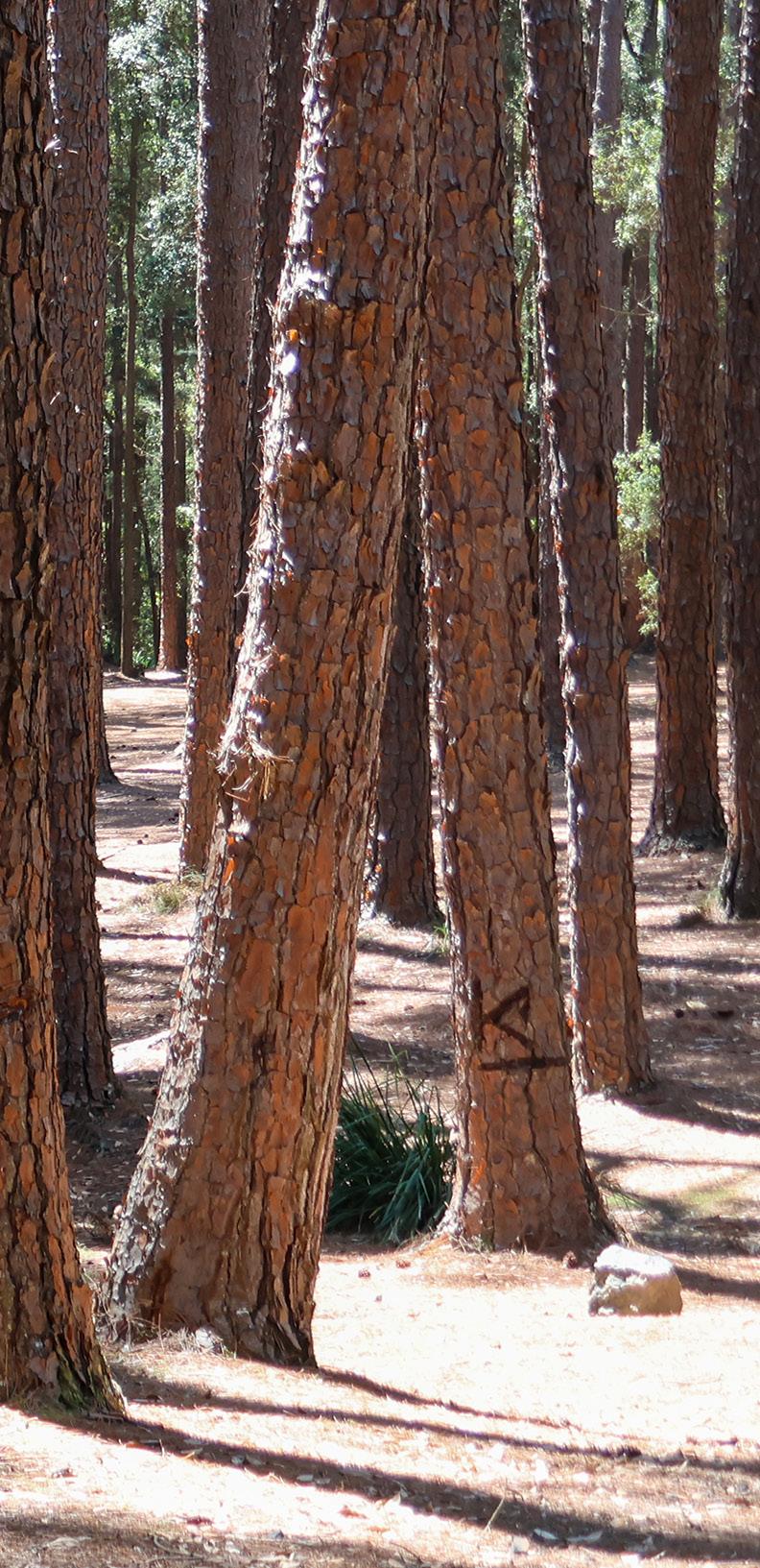
<
Phillip and Ann Samild have enjoyed the forest for years.
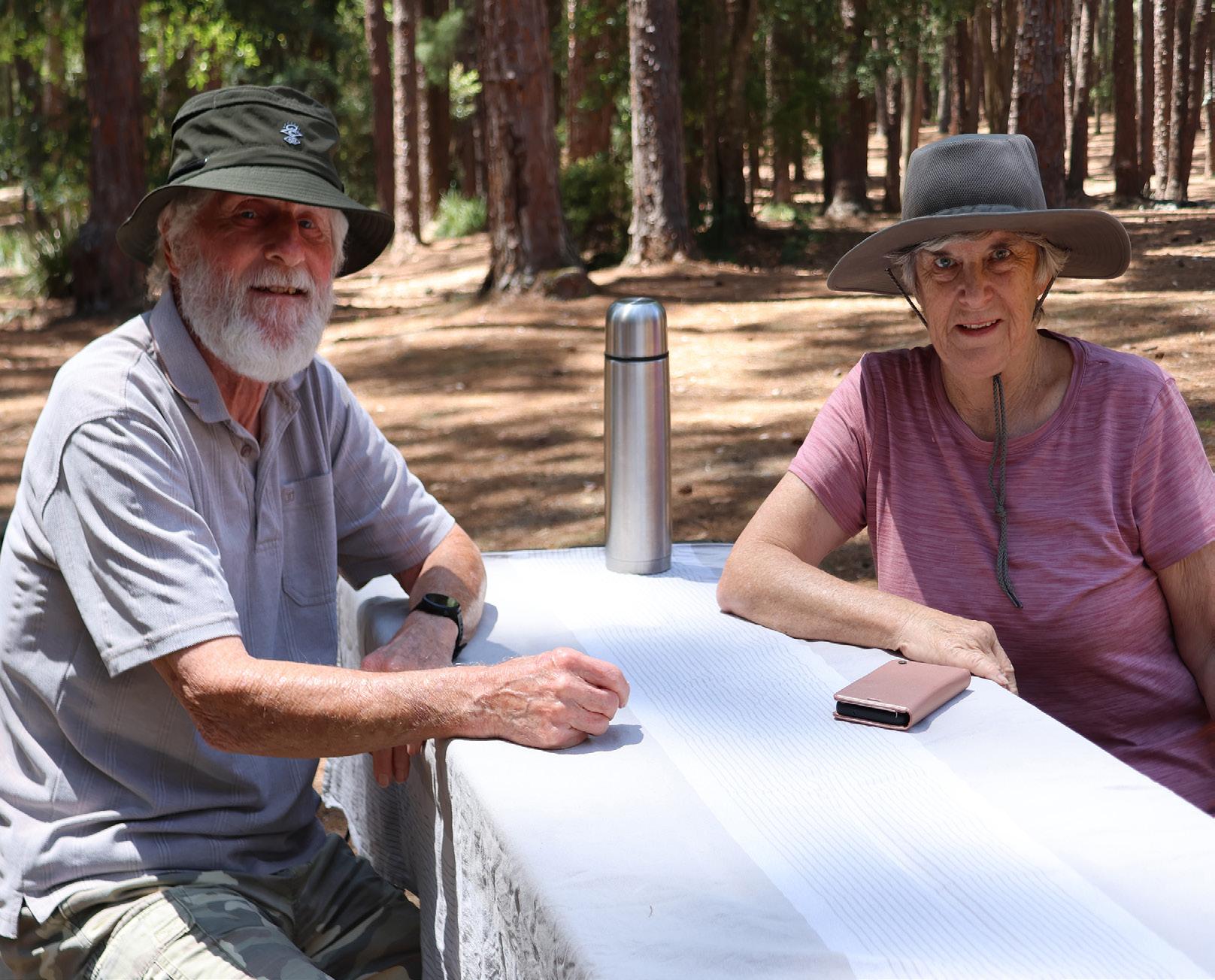
PHILLIP AND ANN SAMILD LOVE THE FOREST
As they sit at one of Forestry Corporation of NSW’s park tables – covered in a tablecloth they brought with them enjoying a cup of tea – it’s a perfect picnic scene on a quiet week day.
The couple have childhood memories of the forest, and they enjoy bush walking, so getting them among the trees isn’t hard.
“It’s beautiful and relaxing,” Phillip said. “The scenery is nice and it’s a perfect day to see it today. The road is good and it’s easy to get to.
“We like the forestry areas. They are more interesting, and they are well kept.”
Ann says the forest is important for everyone, and she appreciates the
We’ve catered for a trail bike user group in an area separate from the main public areas to keep everyone happy, so they can each enjoy their space.
– John Berry
bigger picture for the Corporation when it comes to land management.
“Trees are very important for the reduction of greenhouse gas emissions, and for the animals. But we know they do need to cut some trees for wood,” she said.
“I understand there is a need for forest harvesting, that Forestry Corporation replaces the trees they take, and if you go back to those areas, and there will always be small trees growing. At that point you see all the different stages of their growth. It’s very interesting.”
She said fire is a great example of the forest’s power of regeneration.
“We’ve been to areas affected by the fires, and you can see where the bush fires have gone through and even though it was devastating, you can see how the native forest regrows.
“It has regenerated within five years. The trees have blackened trunks, but they’ve got shoots out and they have survived.
“It brings it home to me when you see that sort of thing. That’s what forestry is all about. Regeneration.
“Keep up your great work with the forest, because we love it.”
GREAT RESULTS
Two triumphs within the team curating forest experiences include the Niigi Niigi (Sealy Lookout) within the Bruxner Park Flora Reserve in Orara East State Forest. In 2019, the iconic local tourist attraction was inducted into the North Coast Regional Tourism Awards Hall of Fame.
Forestry Corporation extended the experience (established by the local Lions in 1968), adding the spectacular canter levered Forest Sky Pier, Korora Lookout, Gumgali Track, an all-access picnic shelter, improved parking facilities (including coaches), toilets, picnic tables and new walking tracks, including the Garraan.gurr walking track. It is open and free to the public every day until dusk.
The second project is the Guulabaa (Place of Koala) tourism precinct in the Cowarra State Forest, after a $6.1 million investment from stakeholders. The project represents a partnership in forest management – bringing together local organisations that were committed to showcasing forest ecology, koala conservation, forest timber products and Aboriginal heritage and cultural practices, in addition to art and design for the public. Forestry Corporation has played a significant role within that.
The project includes:
● Australia’s world first wild Koala breeding facility
● Bunyah Local Aboriginal Land Council’s café
● Bunyah Bilbay Aboriginal art gallery
● The Big Koala, part of Hello Koalas Sculpture Trail
● WildNets treetop playground (welcomed 90,000 customers in its first two years).
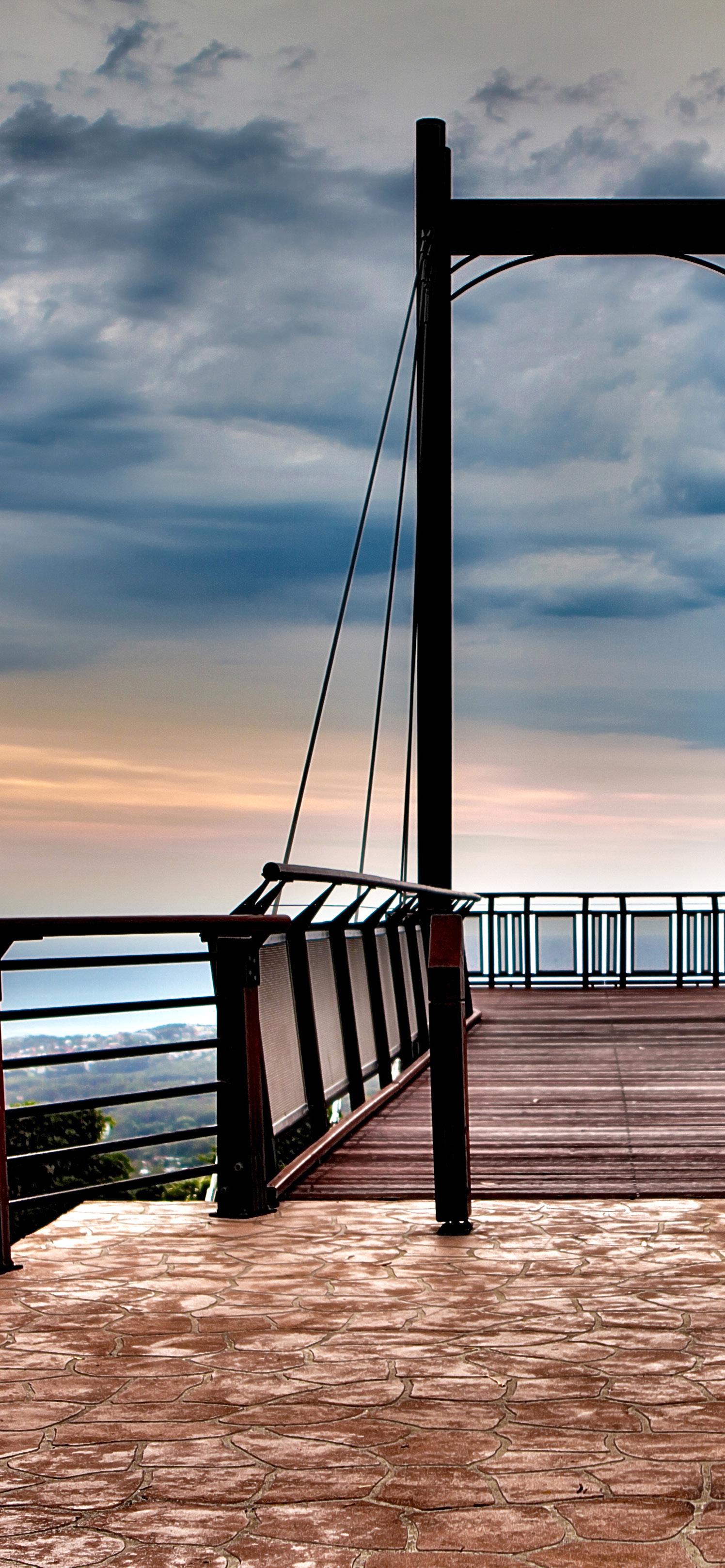
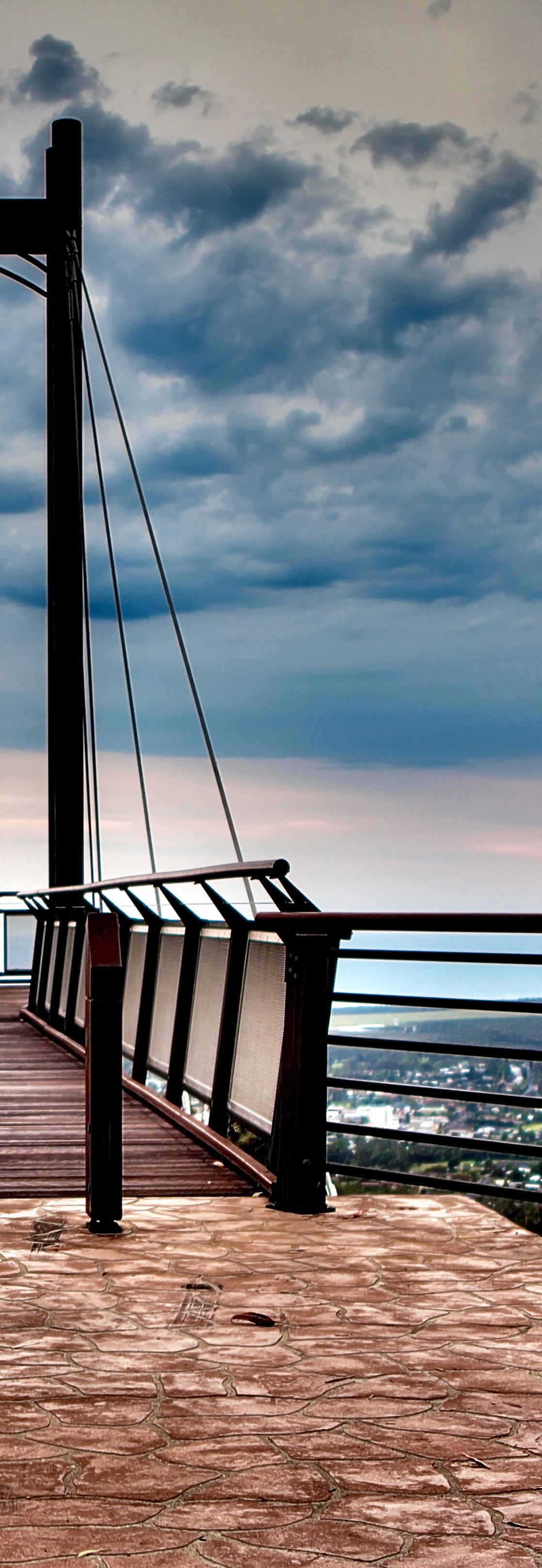
The Sealy Lookout has been inducted into the North Coast Regional Tourism Awards Hall of Fame.
Treasure what you have
Across the north coast John and the team look after scores of forest visitor areas attracting millions of visitors each year.
John’s work continues to be about the trees and who enjoys them. He gestures to the surrounding forest, as he searches for the words to say what he likes about his job.
“You’re looking at it. This is my office. I like the varied forest, the people you get to talk to, and that generally 98% of the people who come here come to enjoy the area. That’s where we get our satisfaction from.
“It’s like your own place. You can make a campfire (if the conditions allow it), prospect, and camp for free for quite a while.
“We get a lot of repeat visitors. People who say they used to come up here as a kid, or their parents came up to camp. They often go back to the same camping areas.
“It’s generational, and they carry those childhood memories.”
WHAT THE PUBLIC DON’T KNOW ABOUT THE PEOPLE WHO FIGHT BUSHFIRES
Everyone looks forward to summer –except perhaps the first responders who shield Australians from bush fires.
Australia is the most fire-prone country on earth, and its first-response defenders face between 45,000 and 60,000 bushfires every year. The good news is Australia has some of the best firefighters on the globe.
However, staying on top of the risk is a heavy responsibility, and time is no-one’s friend, according to Tijmen Klootwijk, from Forestry Corporation of NSW…

More than 80% of Forestry Corporation of NSW’s staff are trained to fight fires to a national standard.
And, those 500 team members do more than protect the forests.
They routinely protect the public and the public’s private property – in step with the State’s lead fire agency – the Rural Fire Service (RFS).
Forestry Corporation is a highly valued part of the four-pronged team responsible for controlling fire in NSW, which includes the NSW Rural Fire Service, Fire and Rescue NSW, Forestry Corporation and the National Parks and Wildlife Service (NPWS).
While Forestry Corporation comes to the lineup to protect its forests, it is also vital protection for the broader community.
This team includes Tijmen Klootwijk – a forester by trade – and a passionate fire manager for the pine plantations in the State’s central west.
He studied forestry at university, has worked in pine plantations most of his career, and learned early that the biggest threat to pine plantations is fire.
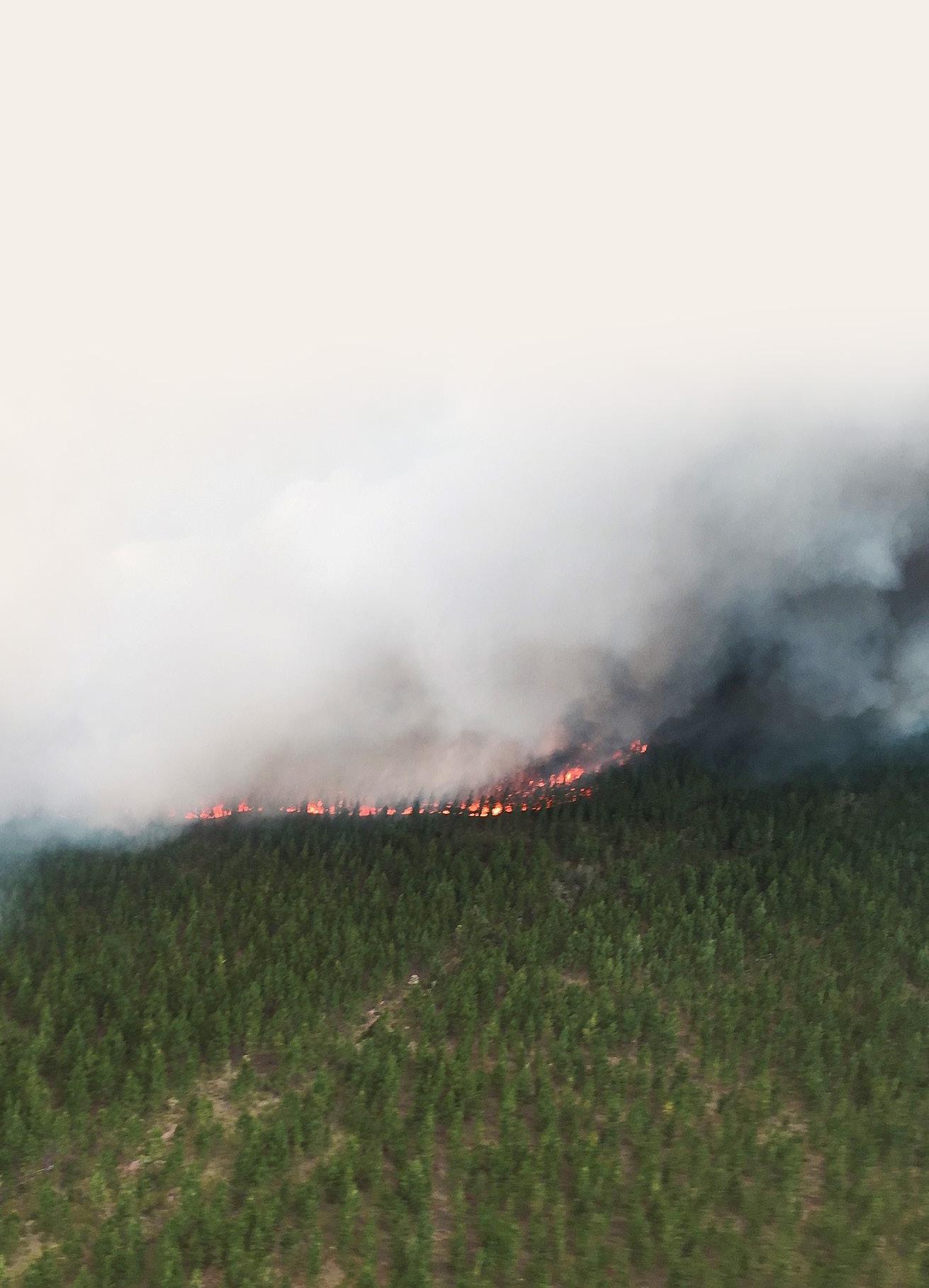
tijmen klootwijk
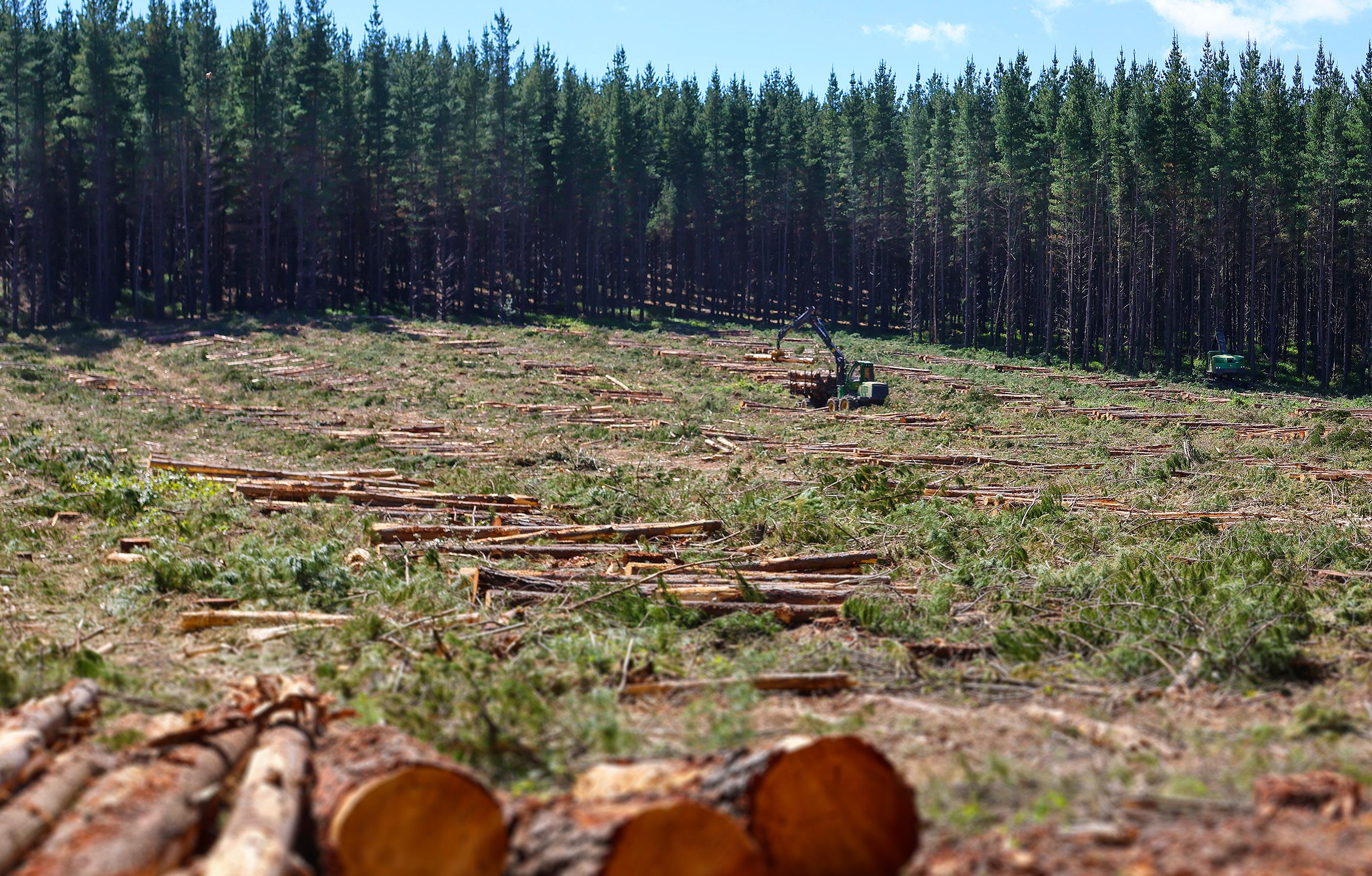
A BUSINESS OF TWO HALVES
Radiata Pine trees are intolerant to fire. If they are burnt, the trees have to be removed and new ones planted. Conversely, native eucalypts can withstand some fire and regenerate afterwards.
It means Forestry Corporation’s team is highly motivated to extinguish fires within the precious 30-minute threshold of any initial sighting.
“As a fire authority we respond to fires that are near to State forest land to stop them reaching the plantations,” Tijmen confirmed.
“This means in small communities we are often the first responders to arrive to fires and work alongside the RFS to protect communities and private property.
“For us, a good fire is any fire that is out.”
The timber that comes from renewable pine plantations is the foundation for house construction. If trees are destroyed by fire, supply will be pressured – driving building prices up to the public.
“Plantations take 30 years to reach final harvest, which a fire can destroy in one day. Without any mitigation or intervention, plantations simply wouldn’t
reach maturity to deliver the products we value and use.”
THE MISCONCEPTION
It means as forest managers, this estate is big business with serious consequences.
Forestry Corporation manages more than two million hectares of State forests – including Australia’s largest renewable timber production and plantation estate of 220,000 hectares.
“We are a business of two halves. We are a forestry business producing timber to build 40,000 homes every year. We also manage the land– which includes managing fire – and we achieve both with the same people,” Tijmen said.
It means over summer everyone within the organisation doubles down, does more hours, and is on high alert –particularly between October and March.
There isn’t a forestry employee who doesn’t stiffen if there is even a suggestion of a whiff of smoke in the air or on the horizon.

FIRES START FROM
NOTHING
Fires can ignite from a whisper of opportunity – a lightning strike, a stray campfire ember, or a spark from machinery.
“State forests, are open to the public to enjoy and what’s unique to this tenure is that you can drive your 4-wheel drive vehicle, your motorbike, ride your horse, bring your dog into the forests, fossick for gems, and forage for mushrooms,” Tijmen said.
“However, when we declare the Plantation Fire Threat Period (PFTP) – when the risk to the plantation from fire is elevated – we no longer permit people to have campfires or solid fuel fires in the forest.
“At that point, our fire response arrangements ramp up, so that we have staff at the ready 24/7. On days with elevated fire risk, we will also halt operations in the forest and operate our fire towers to watch for any smoke.
“We have duty officers on seven days a week, for 24 hours a day. Those officers are part of many across the State who assess the weather for the next day, and for the next four days ahead of that, and coordinate any fire response.
“When we see a shift, and the risk of fire is increasing, we will take a number of actions, to elevate our readiness. Our staff operate on a one-in-three-week fire standby roster. They are on for seven days and rotate like this for up to six months.
“We also have a network of five fire towers in the region operated by our team. They are now augmented with remote sensing cameras that scan the horizon and alert us if they detect smoke in their field of vision.
“Fire towers re very effective at identifying smoke early. They cover a far greater area than just our forest – they cover the whole region.”
The numbers support Tijmen’s comments.
“We did some assessment last year, and of the fires we detected from those towers (which were also reported to the RFS) 58% were detected by Forestry Corporation before they were reported through ‘000’.
“Importantly, the fires that start in remote areas and have the potential to become bigger and more complex, are often first reported by our network of fire towers enabling in-time suppression.”
We did some assessment last year, and of the fires we detected from those towers (which were also reported to the RFS) 58% were detected by Forestry Corporation before they were reported through ‘000’.
– Tijmen Klootwijk, Forestry Corporation of NSW
NO HOLDING BACK
Forestry Corporation’s firefighting training is nationally recognised and training camps are held in the off-season every year. What is also vital in the firefighting effort is the Corporation’s heavy plant and aerial firefighting assets.
The bulldozers and excavators – which are used for harvesting trees or building roads – become critical to the response effort when fire strikes. Heavy equipment can rapidly create bare earth soil breaks, known as control lines, and [here comes lesson 101 in firefighting] – soil (via the separation of continuous fuel) is the most effective way to snuff out fire.
“It’s all about rapid detection, rapid response, and a heavy weight of attack at this time of the year. We will throw everything at it. It’s common for our firefighting helicopter, our 4WD and heavy firefighting units and our dozers to all be responding to a fire at the same time. Throughout our response, we will also be in close contact with the RFS making sure the whole effort is coordinated, ” Tijmen said.
Forestry Corporation’s Map App – designed inhouse – is on iPads that all staff carry with them. It provides all the organisation’s geographic information spatially (in real time). Staff can drop a pin of an incident’s location, or draw a control strategy for everyone to see at a moment’s notice.
Drones with heat detection technology are also quickly becoming vital for getting eyes into difficult terrain, or for detecting persistent hot spots that are invisible to the naked eye post-fire.
Forestry Corporation has 50 heavy firefighting tankers across the State (which each carry 3500 litres of water). The newest fire tankers, which were recently commissioned, are equipped with a thermal camera (for seeing hot spots), a water canon that can spray water 50m, in addition to a full sprinkler system encircling it to protect the team and equipment it carries. Forestry Corporation also has 250-300 state of the art “slip-on” units for their utes (which each carry 400 litres of water), it can tap into additional heavy machinery through its contractors. It contracts helicopters within the key pine plantations regions every season.
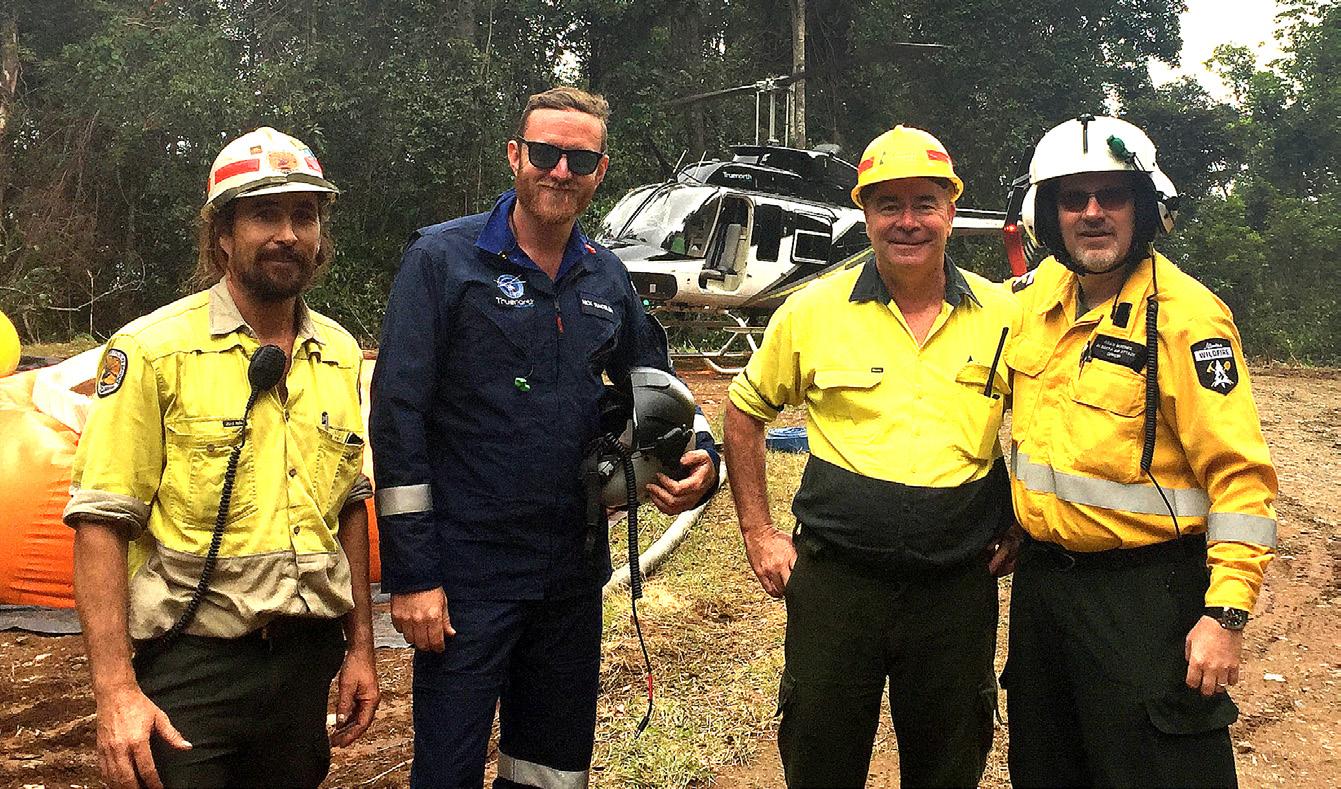
“As a forest manager, we also have access to a large range of contractors (with specialist heavy equipment for forest harvesting, site re-establishment or civil works) that we turn to in order to help us with fire management.
“Our strength as an agency is our access to this skilled contractor base, our motivation for a rapid response to protect the plantations, and that we can deploy our slip-on vehicles, water tankers, dozers, excavators, graders and the helicopters straight away.”
POSITIVE COLLABORATION
Working closely with the RFS remains mutually symbiotic. The RFS is the State’s lead firefighting agency.
In a masterstroke decision, Forestry has invited key RFS staff and thus intel and understanding, into its business. In 2021, the RFS’ Assistant Commissioner, Rebel Talbert, accepted a secondment to Forestry Corporation for one year.
Rebel came to the role with a rich family history in firefighting, a 20-year career with the RFS, post-graduate qualifications in emergency management and public communication, (including being awarded a NSW RFS Commissioner’s Commendation for Service in 2013). She was the first

<
No-one underestimates the value of the highly trained teams who work against fire in Australia.
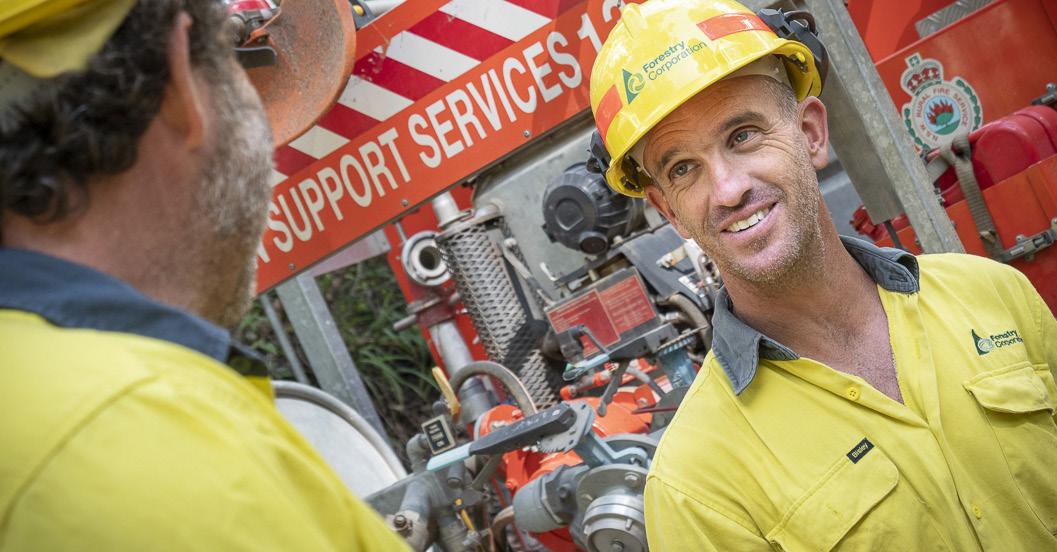
Forestry Corporation is part of a four-pronged attack responsible for controlling fire in NSW. It includes the NSW Rural Fire Service, Fire and Rescue NSW, and the National Parks and Wildlife Services.
woman in Australia to be appointed to the Assistant Commissioner’s role, and she is a long-standing volunteer firefighter with Kenthurst Rural Fire Brigade. In short, she’s a blue blood firefighter.
The difference between the agencies is that the RFS’ primary focus is putting out fires and dealing with emergency situations. Forestry Corporation is also a land manager, so it has an interest in the assets on the land and when the fire is extinguished it returns to its primary business.
“I was interested in the different perspective on firefighting, so I decided to take it,” Rebel shared. “I found that I loved the people, the culture, and the complexity of the organisation. There are a lot of challenges in fire, so there were a lot of opportunities for my skillset to be applied in a different context.”
At the end of that year, a longer-term opportunity presented itself, and Rebel accepted her current role as Forestry Corporation of NSW’s Senior Manager of Fire and Natural Hazards.
“There was a re-alignment around how fire would be managed, and I focussed on how we would respond in that environment. Forestry has very strong firefighting
Collaboration between key agencies is critical when the fire comes.
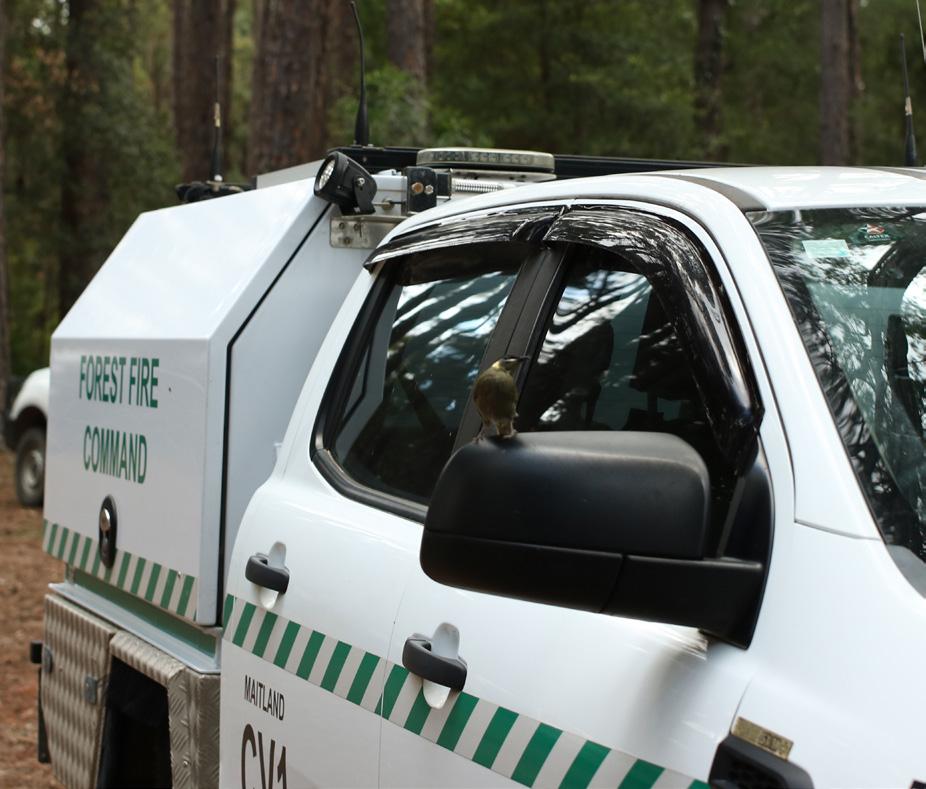
capability and heritage, and there are lots of opportunities to do things differently with technology, and to help both agencies while doing so.
“While I had really mixed emotions leaving the RFS because I loved it there too, there was also a lot to be excited about within Forestry,” Rebel said. “It’s a grassroots organisation, it’s very connected to communities, and I’m working with great people. It just felt like the right time and the right opportunity. The RFS Commissioner was very supportive of my move.”
She says speed and decisive action is their greatest ally.
“I try to maximise what we can deliver in the shortest amount of time. We have limited time between each season to review and put new developments into practice. Our work is always at pace.”
Tijmen confirmed Rebel’s inclusion in Forestry Corporation’s team been a great move.
“Rebel brings a wealth of experience. Without doubt, it’s led to greater collaboration between both of our agencies. Ultimately, this all leads to improved wildfire control, and outcomes in which everyone is the winner.”
ALL OR NOTHING
The summary of this layered story – often ignored or maligned – is that producing timber for homes in Australia comes hand-in-hand with the need to fight fires.
“It still surprises me that if you say you’re a ‘forester’, people are often not sure what that means. Yet, everyone is using a product from the forest every day,” Tijmen said.
“Whether it’s in the structure of the home they’re living in, right through to their toilet paper.”
So, while summer and Christmas usually mean it’s time for fun, friends, and family, it will always be a muted celebration for the dedicated team within this organisation.
Tijmen said, “In NSW our forests have been actively managed for more than 100 years, and fire remains our greatest threat. I think it’s fair to say that our attitude to fire is ‘obsessed’.
“And, with Australia’s future timber at risk that’s the way we need to be.”
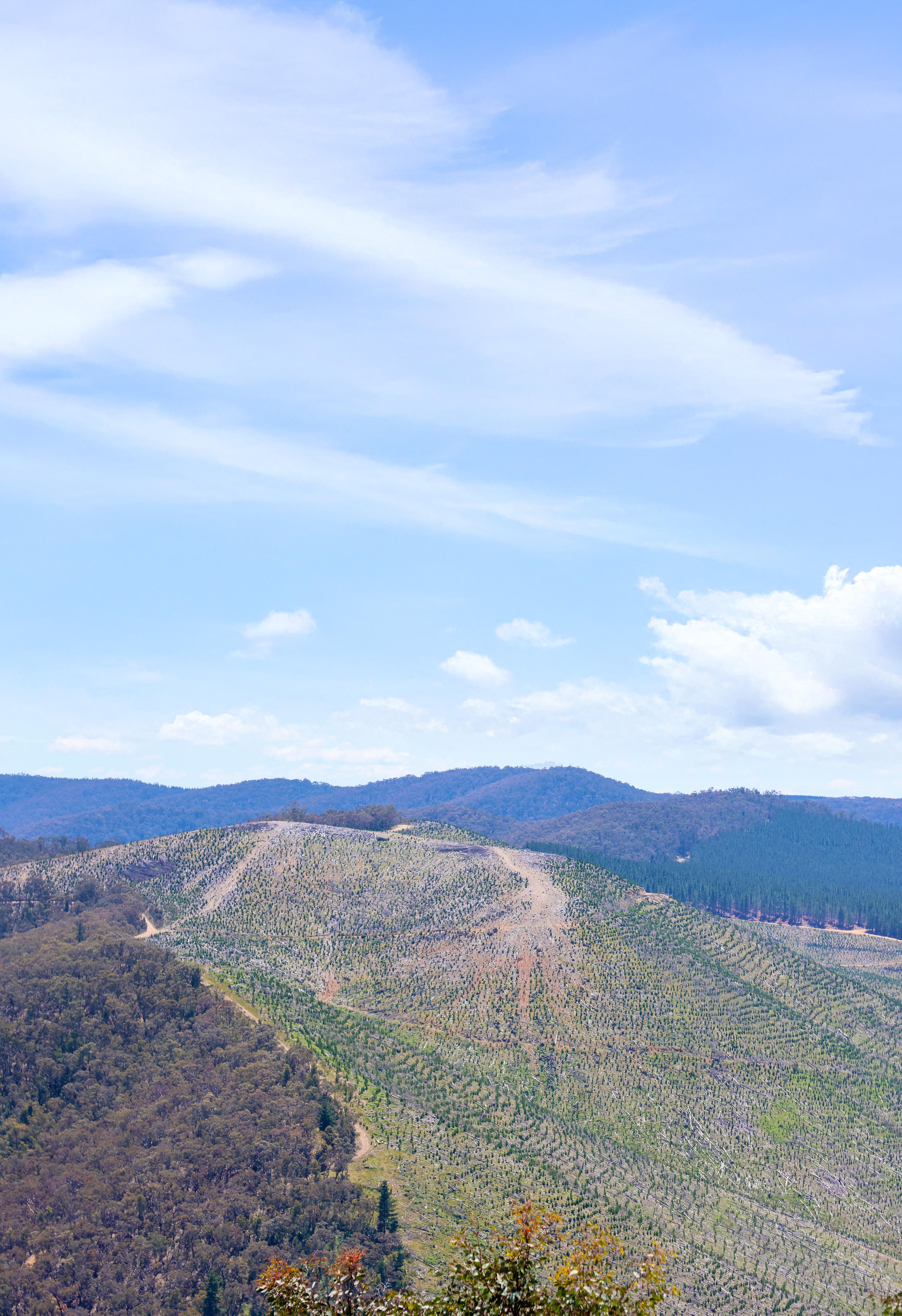
I think it’s fair to say that our attitude to fire is ‘obsessed’. And, with Australia’s future timber at risk that’s the way we need to be.
– Tijmen Klootwijk, Forestry Corporation of NSW
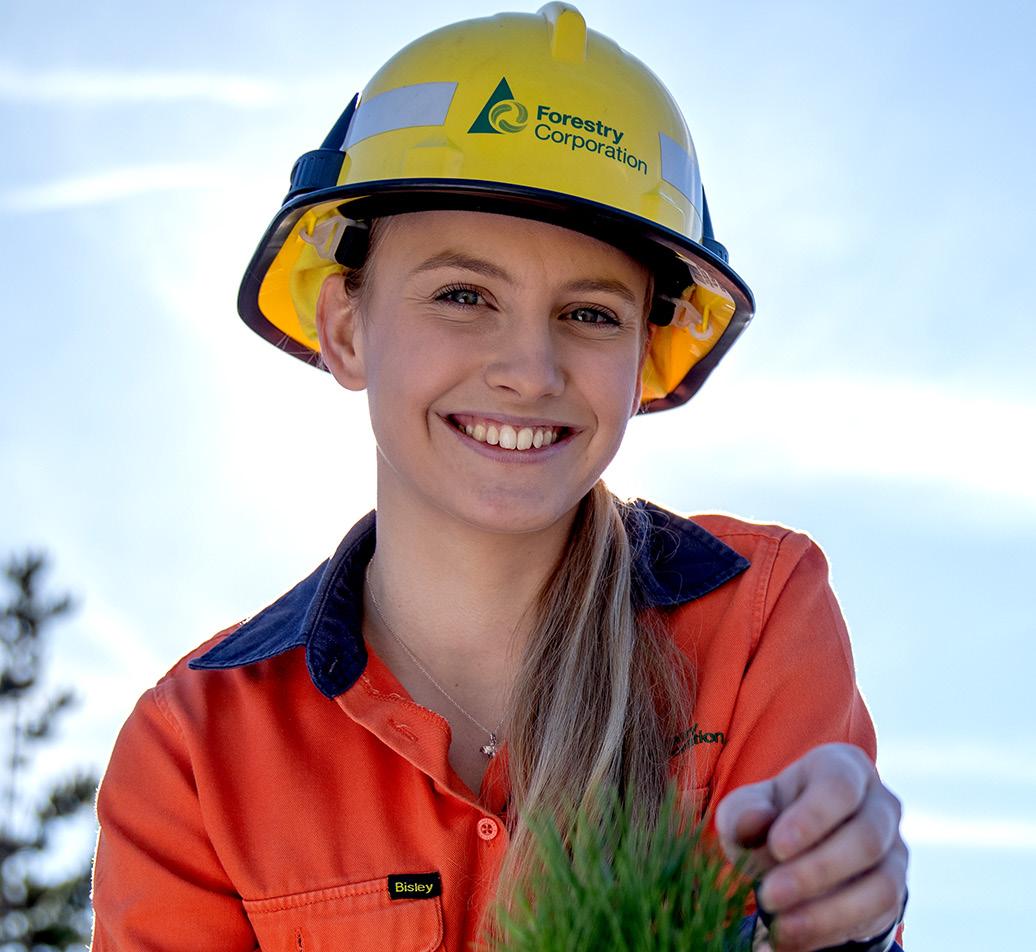
When the going gets tough ...
SILVICULTURE
is proof that from small things, big things grow.
The 23-year-old is a 1.58 (5”2’) pocket rocket of energy and drive who has made her place – in a hardhat – with a career choice men historically dominate. Strap in, because this Silviculture Supervisor at Forestry Corporation of NSW, has some big thoughts that bear thinking about.
Izzy credits her job among the trees for significantly improving her health, and she speaks out about what forestry does for her community, the economy – and how sustainably this renewable business happens.
Forestry has built her confidence to the point that she makes no apologies for how it has shaped her. She is a trained firefighter, and if her ute gets bogged, she won’t be making a call for help on the two-way radio. She’ll winch herself out.
Izzy independently bought her first home aged 20 and by the end of next year, she hopes to invest in a second. And, she knows what many young people don’t – that her home is supported by timber sourced from renewable pine forests in Australia.
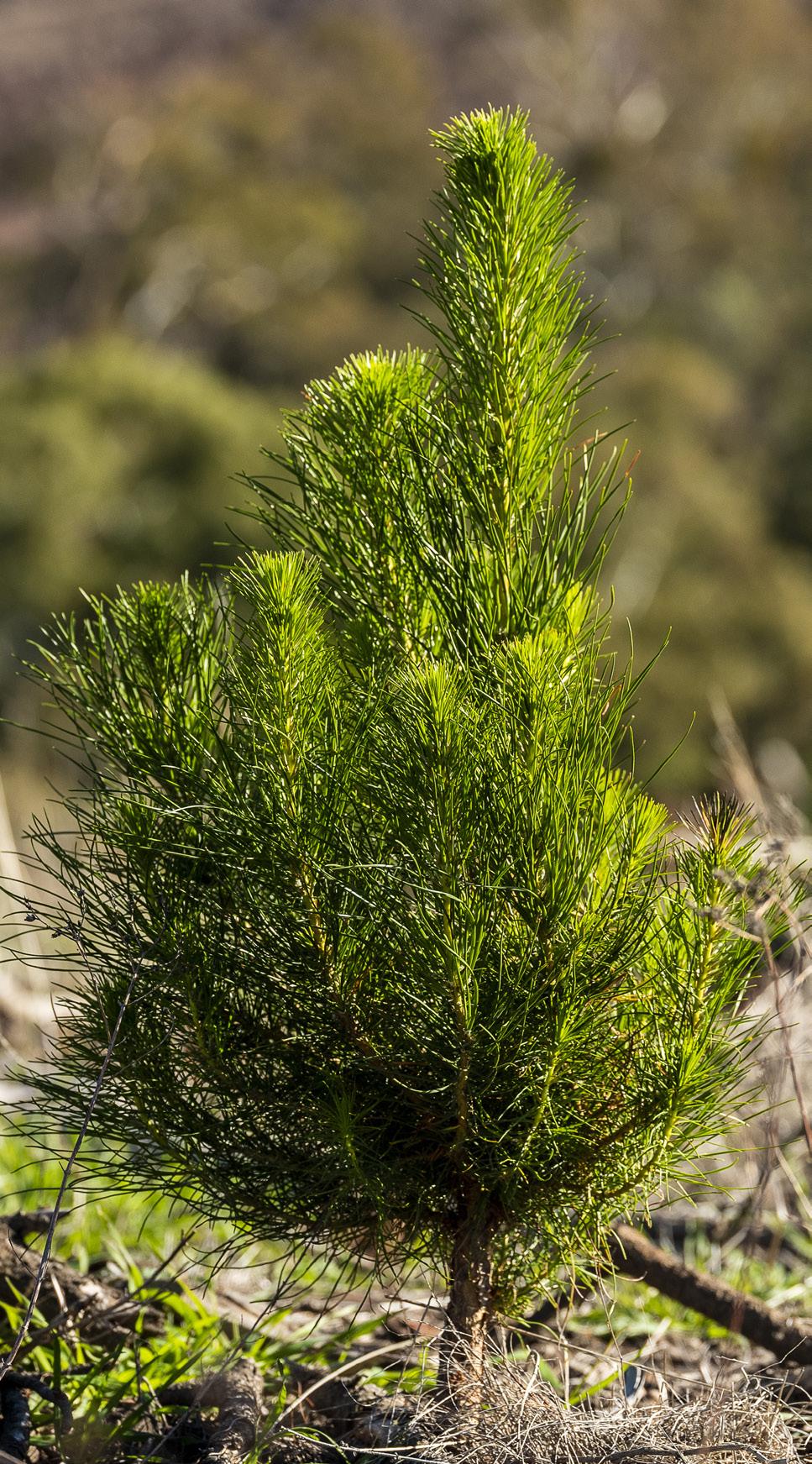
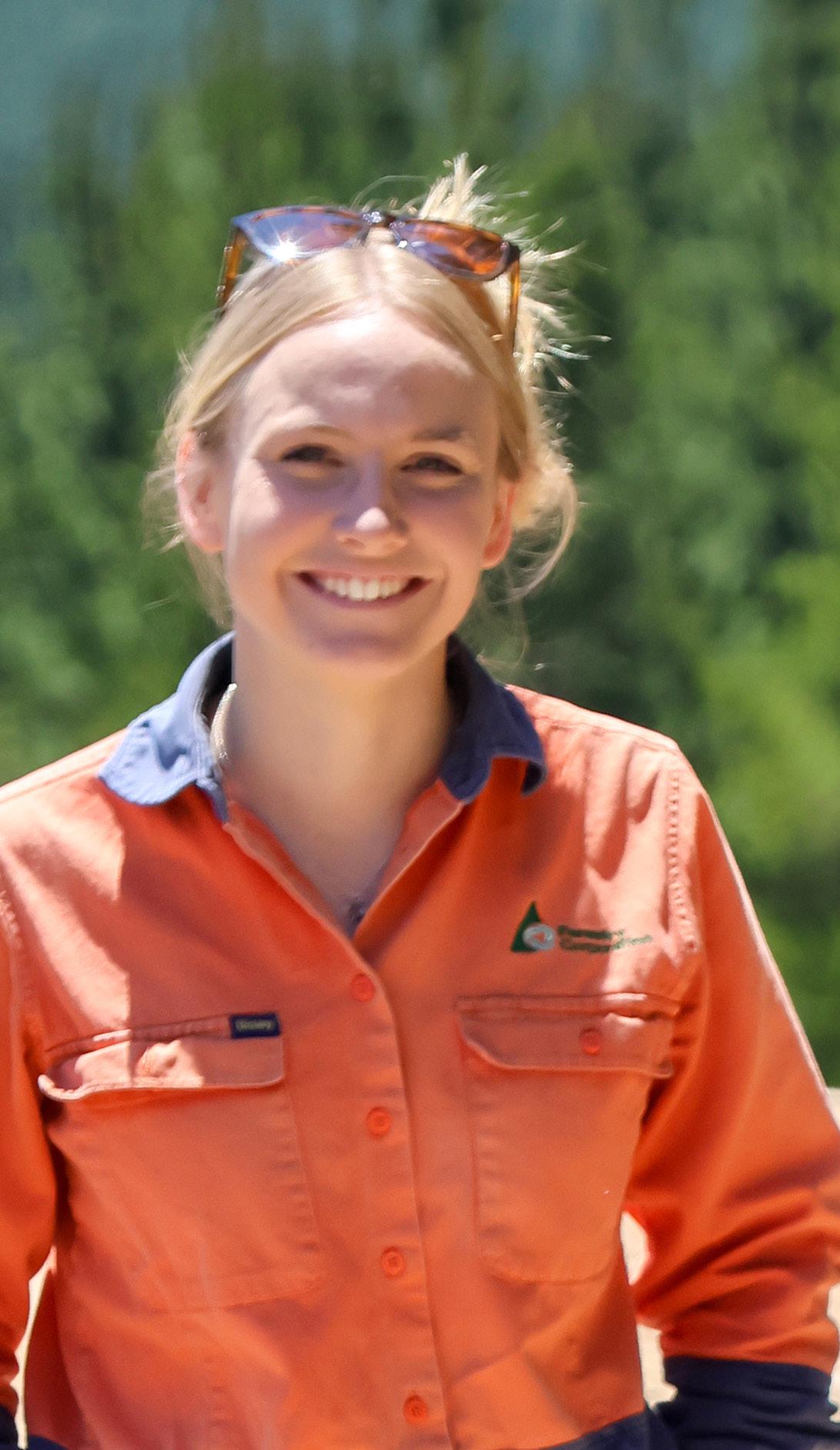
This is not a ‘look at me’, it’s a ‘look at me showing you this’. I want to do the industry justice and show our collective passion for it.
– Izzy Smith, Silviculture Supervisor at Forestry Corporation of NSW.
KNOWLEDGE IS POWER
When the conversation turns to why she does what she does, the internal fire in her comes out. The pine trees take 28 years to mature. Plantation species in NSW State forests are either hardwood (mostly eucalypts) or softwood (mostly radiata pine), depending on the wood’s density and hardness. The structural and framing timber that comes from the pines which Izzy oversees (in the central west of the plantation) is used in housing construction.
“If I do this job for ten years, there is a damn good chance my grandkids could live in a house supported by timber that came from the trees I’ve helped grow,” Izzy smiles.
“Everyone consumes timber, but only a select few buy the raw products. The people buying it are builders and manufacturers, for example. Not many people buy a pine tree. They are buying the manufactured bench top or cupboard, so they don’t have a connection to the process.
“I know how much care and effort has been put into growing the trees to make these products. I know that our harvest operators are making as many decisions as a pilot per second when they are cutting the timber. They are looking at each log and assessing the diameter, length, what the sweep is, branching, and making a judgement on what products we should get out of trees to maximise their value.
“Forestry is such a unique industry, and there is so much passion among us all. Every single tree was planted by hand. Our tree planters are some of the grittiest people you’ll ever meet…by far. They have walked through blackberries along every single row carrying a tray of trees on each hip and a shovel, bending over and planting every single one of these trees… regardless of the weather. And they can plant up to 4000 trees a day. How much commitment and pride does that take?
“And, at maturity, we cut every single tree individually. It’s all meticulously planned. We’ve nurtured them, fertilised them, kept the weeds and pests off them, protected them from fire, maintained
the roads, promoted them, and allowed people to enjoy them – to ride motorbikes or their horses among them. They have been growing for 28 years, and at that point we feel an obligation to the people who planted these trees to get as much timber as possible from each tree.”
She re-iterates that forestry is renewable – unlike concrete and steel – and technology now gives them significant and detailed control over every step of the process meaning that environmental protections are more robust than ever.
“I would say to those that are concerned about our industry that we are largescale long-rotation crop farmers. The trees are a crop – just like wheat or barley. At the end of day, they grow back just as fast as they did the first time. All we are doing is making space for the next generation.
“How many other farmers have to protect their crop for 28 years, before they can reap the rewards? I can understand how it looks when we cut the trees down. However, this pine was planted purely for this reason, it’s been assessed, so we are aware of native habitat trees or endangered species in there and take measures to protect them. The forest was built for that purpose.
“The country needs our forests to be sustainable. The public need houses, regional timber towns need employment. In most cases, within two years of a harvest, new trees are growing there. Think about that.”
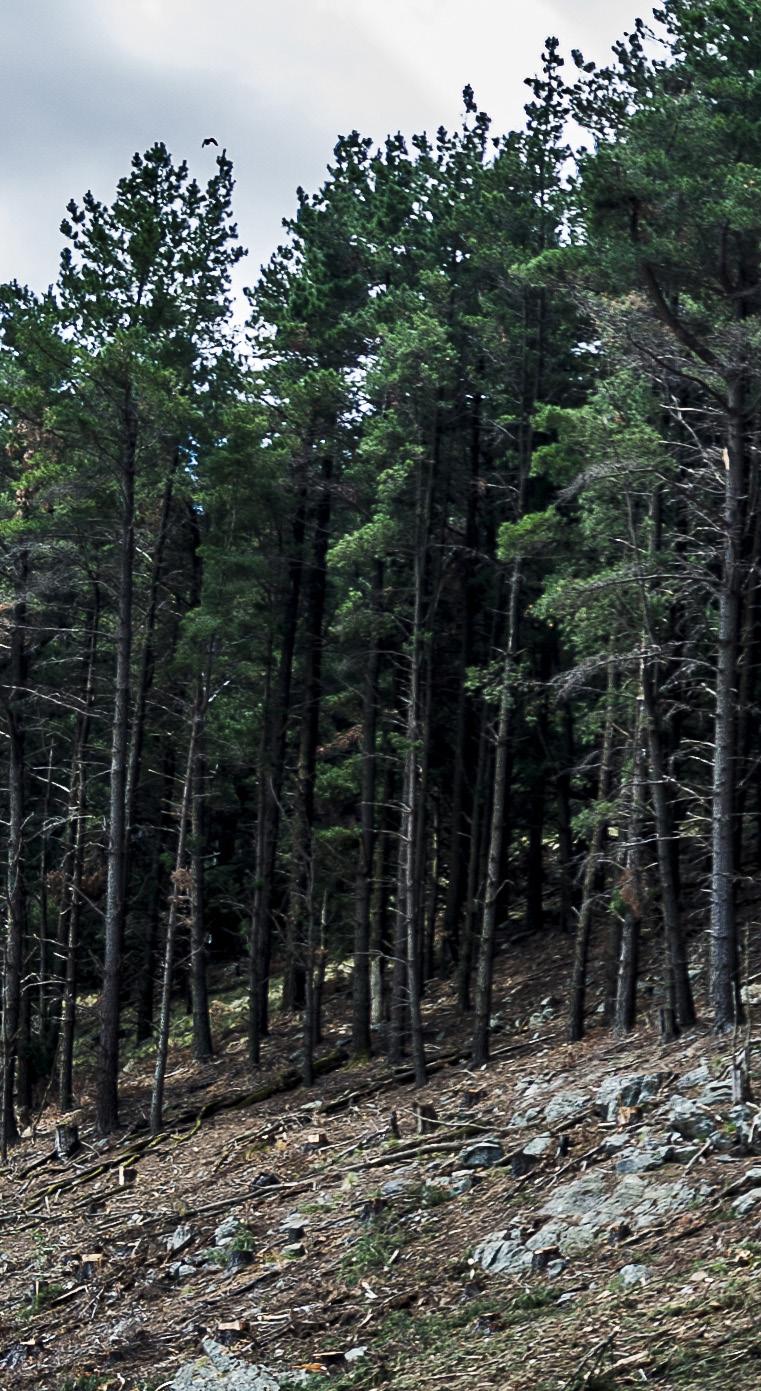
Forestry operates like a large-scale long rotation crop farming operation. Photo: Forestry Corporation Image Library. <
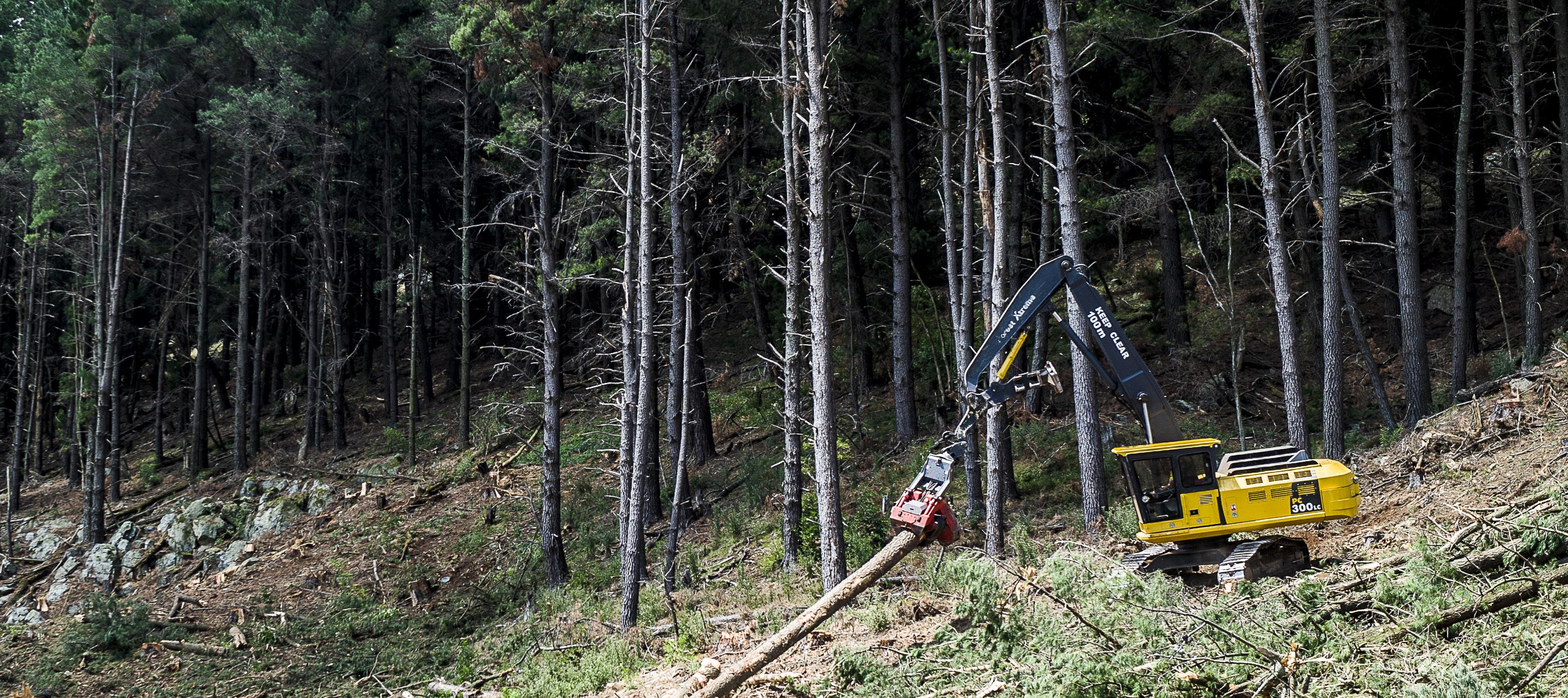
If I do this job for ten years, there is a damn good chance my grandkids could live in a house supported by timber that came from the trees I’ve helped grow.
– Izzy Smith, Silviculture Supervisor at Forestry Corporation of NSW.
“I’ll do it”
Izzy puts her hand up to defend forestry because she says someone has to.
“I don’t love the attention. This isn’t about me. It’s about sharing our industry by having someone like myself explaining and encouraging the younger generation – including young women. It’s an opportunity to share Forestry Corporation’s story.
“It’s not a ‘look at me’, it’s a ‘look at me, showing you this’. I want to do the industry justice and show our collective passion for it. I want our message to be absorbed.
“I was born and bred here in Bathurst, and I’ll likely be here for most of my life. I grew up with forestry around me and I never knew it was here,” she said. “I used to ride bikes through here, I learnt to drive and rode horses in the forest.
I spent most of my childhood in these forests and I had absolutely no idea what they were for.
“Anyone can access and enjoy a State forest. I am the type of person who always asks ‘why’ for everything, and I never asked why the pine trees were here. I can’t be the only one who didn’t fully understand forestry?”
To that end, she put her hardhat aside recently – accepting the mantle of Bathurst’s Young Woman Ambassador. Historically, it has been a showgirl role, which is a long way from Izzy’s day-today persona.
“There were so many more reasons to do it than not to,” Izzy smiled. “I’ve turned the role into what I wanted it to be. I signed up to promote forestry and agriculture. So many people aren’t aware of it and when you make people aware of how beautiful it is, how phenomenal the operations are, and the amount of passion and planning that goes into it. What’s not to love about it?
“If I can help get people into the bush and understand what we do, they are more likely to value the wood that comes from the forest.”
SLIDING DOOR MOMENT
Izzy Smith initially took a seven-month contract with Forestry Corporation of NSW with no expectations.
She needed a break from real estate, and her secondary job with Donut King (which she had held since she was 12). She said she wasn’t sure she was doing the right thing at the time, but something had to give. She wasn’t where she wanted to be, she was sick, and she was sick and tired of real estate.
“I was very doubtful of myself, because I was never going to be the fastest or the strongest and really doubted that I would be able to keep up with everyone physically,” Izzy said. “But I’m a hard worker, I’m very determined, and I just fell in love with it.
“I’ve bogged my ute out here on my own more times than I care to count. We do have radios that are regionwide but everyone can hear everything, so the very last thing I wanted to do was tell them
all I was stuck. You tend to work it out for yourself pretty quickly.
“In all honesty, in the end the physicality wasn’t an issue. Yes, everything was harder for me to do at the start, but once I had been there for a while, I built the muscle and the skill.”
Izzy is now one of 16 women in the 78 strong Bathurst forestry workforce, and her confidence is palpable. Before she joined, she was challenged by health concerns that were thought to be related to stress and an office environment. They are now all gone, and she credits her health to her outdoor lifestyle.
Today, she often takes icing sugar for lunch, finds a blackberry bush – in an area with good cell phone coverage – and dines off nature on one of the many winding forestry roads.
She says her training has done more than sustain her within her job – it has built her life skills.
FIRE
THE BIGGEST THREAT
Without question, the biggest threat to forestry is fire. Pine trees are intolerant to it, and this team is extremely motivated to extinguish any fires within the precious 30-minute threshold of an initial sighting.
To understand the magnitude of that commitment, Forestry Corporation manages the largest pine plantation estate in Australia – growing enough timber to build 40,000 new homes every year. That is all the homes in the central west towns of Bathurst, Orange and Oberon.
Keeping those future housing materials safe is critical.
To achieve it, Forestry Corporation collaborates with stakeholders to protect the territory –including the State’s lead fire authority – the NSW Rural Fire Service. Forestry staff like Izzy are trained fire fighters, and every one of them puts in extra hours through the fire season to not

only protect the forest, but also its surrounding properties, towns, and residents.
“Our training puts us in high pressure situations, and it teaches us how to read the weather, read fire behaviour, how to keep yourself and your crew out of danger, and how to not put yourself in a spot where you’re trapped,” Izzy said.
“Because the reality is that we work in the Australian bush, and we’re surrounded by highly flammable fuel. Pine and eucalypt are full of oil, which is highly flammable, and the forest’s understory is full of dead branches and pine needles. There are also overhead hazards, and pine has very shallow roots so it is prone to being blown over.
“Fire is intimidating, but you’re in a skilled team who know what they are doing. So, for me fire is something I’m incredibly respectful of, without being fearful of it because of my training.”
<
Izzy Smith says if she stays in her job for 10 years or more, there is a high chance her grandchildren could live in a house supported by timber from the trees she’s helped grow. Photo: Forestry Corporation Image Library.
Fire is intimidating, but you’re in a skilled team who know what they are doing. So, for me fire is something I’m incredibly respectful of, without being fearful of it because of my training.
– Izzy Smith, Silviculture Supervisor at Forestry Corporation of NSW.
PERSONALITY DRIVES OUTCOMES
When Izzy ponders on the biggest challenges she has faced in this career, she has an interesting answer – considering she is one of the first-response fire fighters through the summer.
“My biggest challenge is trying to make your way in an industry that has limited people similar to yourself. This is something that I would love to influence.” she says.
From a starting position of clearing tracks, pruning trees, firefighting, and maintaining the forest to coordinating the aerial spraying program with 3000 ha of trees and supervising harvesting crews, Izzy now often leads a team of workers that initially took her under their wing when she joined the business.
She has been encouraged along the way by the opportunity to work under two of the three female managers that have worked in the region since its establishment.
“I have used my personality and presence to counter my age, gender, and size. I’m not apologetic for who I am. I am a woman with feminine qualities, and I’m proud of that and grateful to the women before me who have allowed me to track this course.
“There has never been a lack of respect from the men when I was in the field, but they also had to adapt to me as well. I’m here to work, I’m being paid the same amount as them, and I expect to work as hard as them. I expected to have to prove myself, just like anyone else.
“A lot of the guys have been in the bush longer than I have been alive, and they know more about the bush than I do,
and I certainly acknowledge that. But I may know more about aerial herbicides or environmental protection or planning, and we collectively use all of our strengths. I trust the people I work with – we are all here to do a high quality job and get home safe every day.”
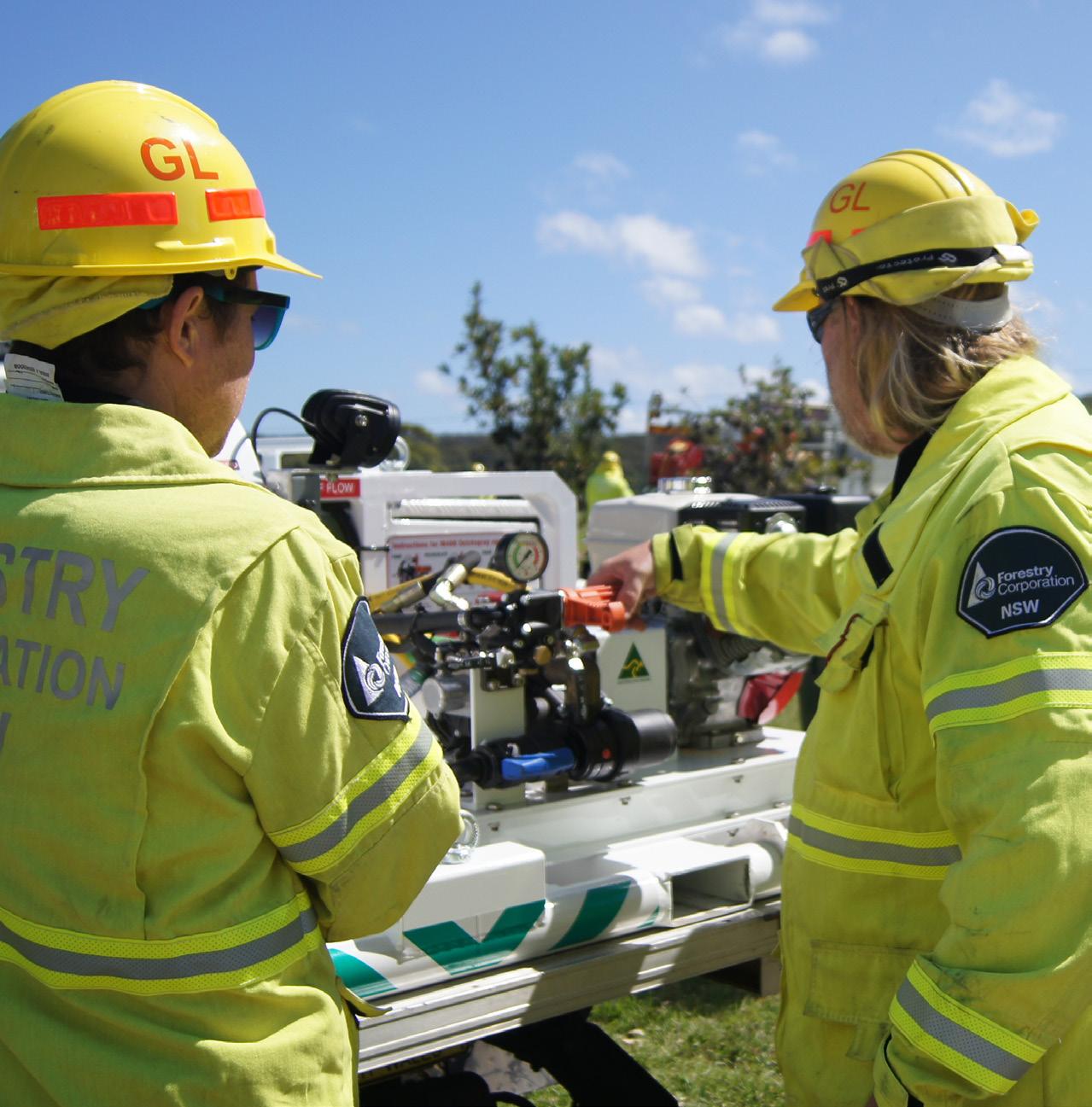
More than 80% of Forestry Corporation of NSW’s staff are trained to fight fires to a national standard. Photo: Forestry Corporation Image Library.
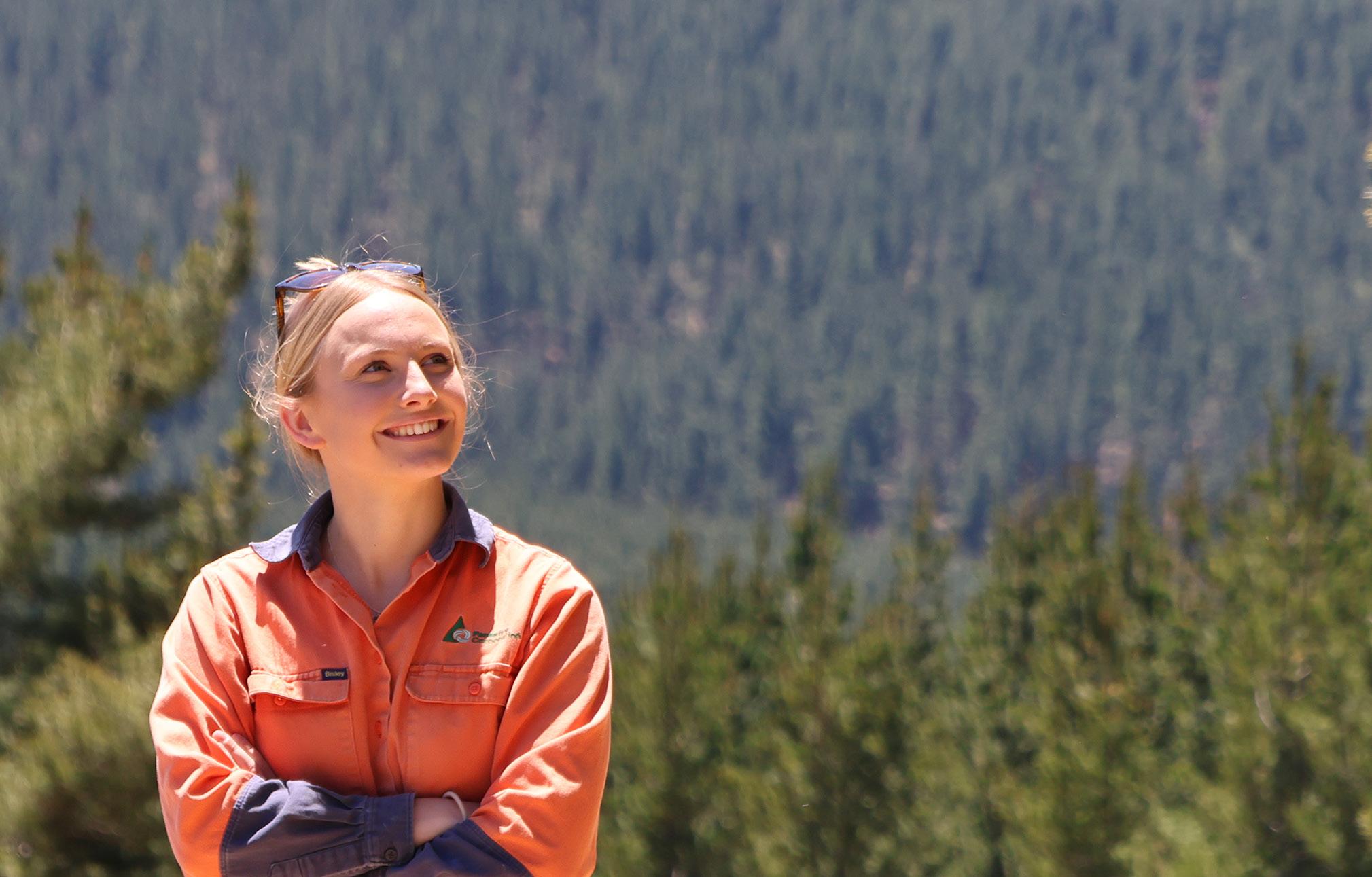
FORESTRY BUILDS CONFIDENCE
Ultimately, she says she has her dream job.
“Real estate taught me contract management, negotiating, and professionalism. Forestry has taught me what I’m capable of. This is my office,” she says gesturing to the wide-open space she stands in
“I’m paid to be here. I’m paid to fight fire. I’m paid to walk through the plantation and check on the health of the trees, identify weeds, supervise helicopters flying at low altitudes and watch skilled harvesters cut down logs and turn them into people’s homes. You can’t ask for much more than that.”
Izzy makes no bones, that she would like to move up the forestry ladder.
“I say that hesitantly, but I do have aspirations because I really care about the pine. I want to manage it well, I want to share our story, I want people to understand. I also want to be able to lead and empower people.
“I love learning people’s story, what motivates them or gives them satisfaction. People aren’t numbers anymore. If you don’t know what
motivates people, how are they going to want to do a good job or respect you or respect the work they are doing? I’d love to be able to be in the position that I can help others love their job.”
That includes encouraging others into the profession
“It sounds so cliché, but ‘just do it’, because you will be trained. There’s a wide range of different roles within the plantation from administration to firefighting and everything in between, there’s something for you to excel in. You will gain the strength through practical work; you’ll create relationships you can count on with people who want to help you do well.
“Forestry has certainly taught me to back myself. It’s something that I didn’t think I’d ever be able to do.
“And, now I have a career that I love within a business that invests in a team that cares for the forest and values the timber that comes out of it.”
Izzy says Forestry Corporation of NSW is a profession with opportunities to rise. Photo: Dianna Malcolm.
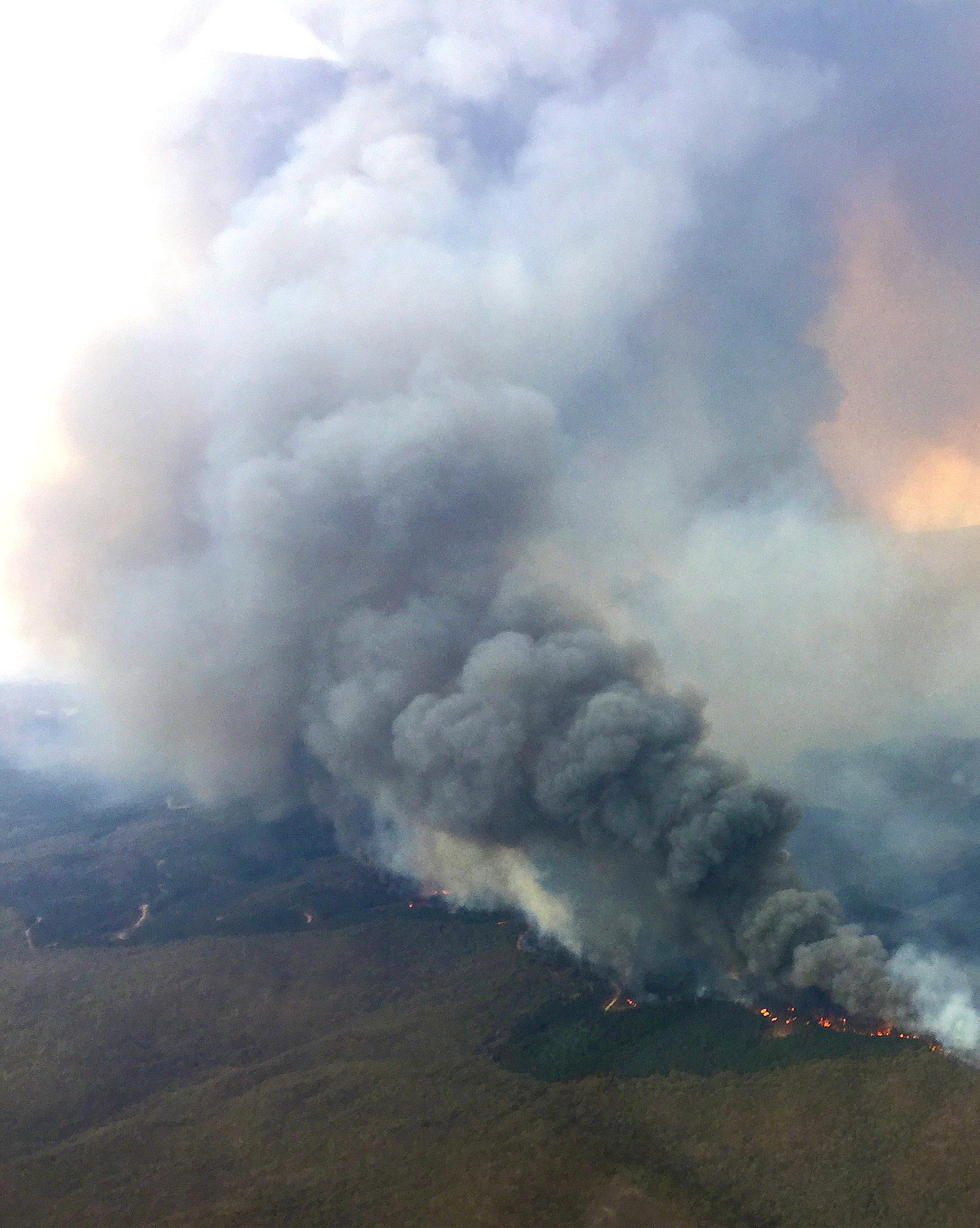
Fire is the common enemy… technology carries extra answers
JAMES CARTER

Interagency collaboration on fire took a step forward when Jamie Carter joined Forestry Corporation.
James [or Jamie as he is more commonly known] was the former NSW Rural Fire Service’s (RFS) Strategic Fire Trails Manager. Within Forestry Corporation he has taken on a broad role in Land and Innovation Management – with a sharp focus on fire and the next generation of early fire detection technology.
Both agencies recognise the quantum risk fire poses to forestry. Their respective points of difference are that the RFS is a combat agency whose core business is fighting fire. While Forestry Corporation is in the business of growing trees.
However, fire is their common enemy, and they have a matching passion for throwing cold water on hot subjects
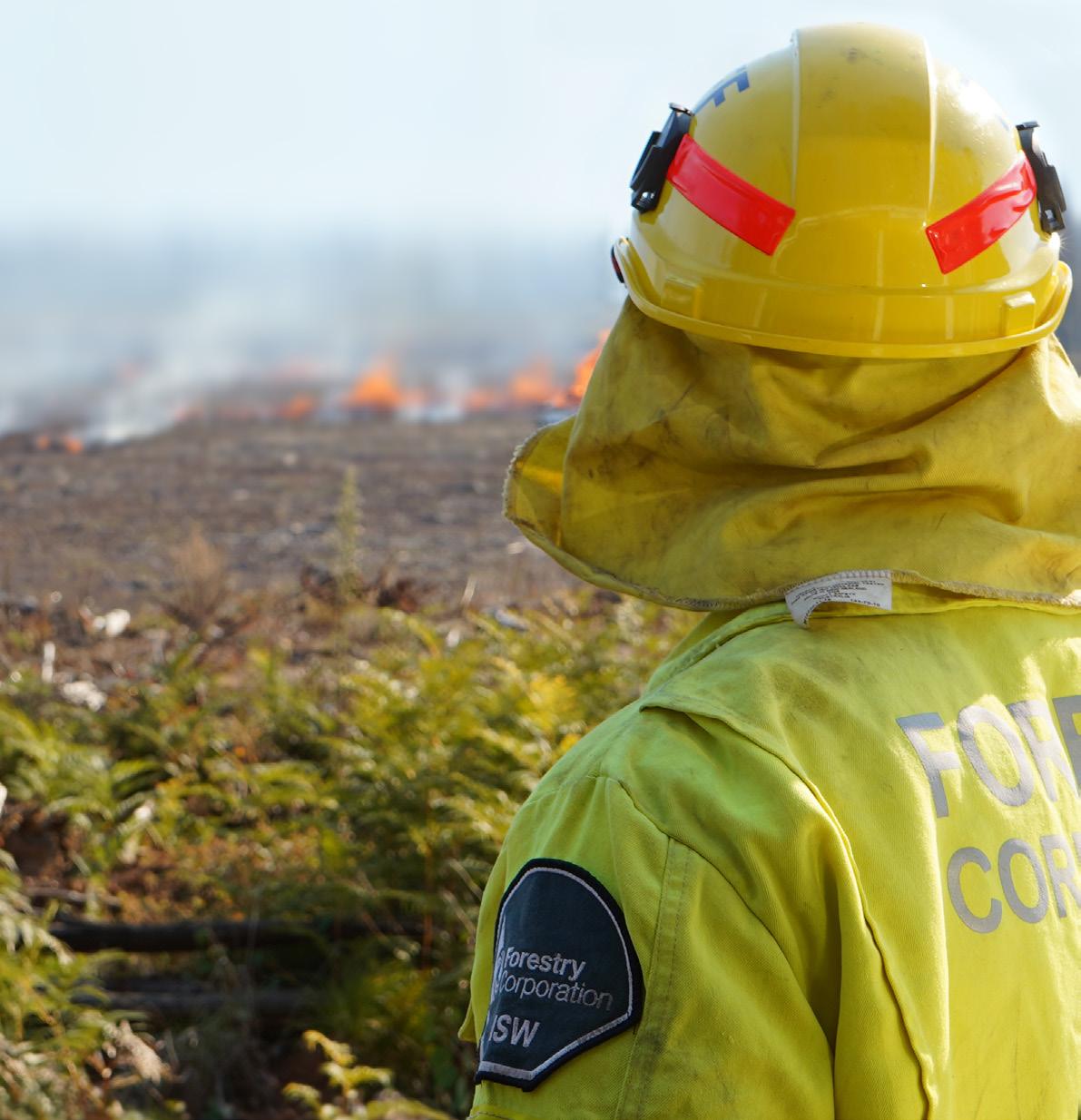
Jamie Carter was a RFS commander during the 2019 Gospers Mountain fire which burned through a million hectares in 79 days.
The subsequent three-year coronial inquest is well documented, and the affirmation James took from that inquest’s findings forms an indelible part of his psyche, personal growth, and strategic thinking as he moves forward with his career in forestry.
Having knowledge of both organisations at a senior level has created progressive conversations that is melding experience, knowledge, and emerging technology. This increasingly refined arsenal of technology-driven solutions is close to changing outcomes for both organisations and the Australian public.
“Beyond the safety of people, I guess the next biggest single risk is that pine trees can burn at the rate of $2 million to $3 million an hour,” Jamie said. “There are very few other risks to this business of that scale.”
While it’s acknowledged that the pine plantations are the most vulnerable, the hardwood forests also face their own challenges. A hardwood tree with a diameter of less than 15 cm that is impacted by fire is often lost, and – if it does recover – it grows slowly and more often than not sustains deformities within its regenerative process.
Background grounded in fire awareness
Jamie was raised in the Blue Mountains of NSW, and his family was always heavily committed to volunteer fire fighting.
“My dad got involved in bush fire research when I was little,” Jamie said. “We would spend a lot of time doing various experiments in our back yard – around how fire behaves – and how to make it behave safely. I learned to understand it at a high level from a very young age.
“I always had a curiosity about the natural world, and I wanted to know how it works. It’s something that appeals to me. Fire is kind of in my blood to a degree, it’s been a very big part of my life, and I have a very healthy respect for it.”
After completing a Bachelor’s Degree in Applied Science Jamie spent time running his own business in the construction sector in project management. However, he never lost his ties to the RFS and was a volunteer fire fighter for 28 years before joining the RFS fulltime for five years. In March 2024, he took leave without pay to join Forestry Corporation for a 12-month secondment.
“I really enjoyed that 12 months, and when this job came up, I was keen to apply,” Jamie said. “The thing I like about forestry is that it is quite complex to manage fire in a commercial environment.
“You’re not boosting sales and revenue; you’re avoiding loss and that is a harder commercial proposition to sell. It forces you to think smart about how to do things better to achieve what we need to achieve. I like that challenge.”
His parallel interest in the weather space came from “necessity”, so he could understand and help predict fire behaviour. He is now one of a handful of nationally accredited fire behaviour analysts in Australia. This highly specialised role focusses on the interactions of geography, weather, wind, heat, and fuel to predict where the fire will go, and how fast it will get there.
“It’s about identifying the opportunities to do something about it,” Jamie said. “It’s a skillset and part of that means providing input to improve all the systems that get used across the country for fire management.
“Fire Danger Ratings and Fire Behaviour Indexes are all based on mathematical models that predict what fire will do in different conditions, and we are constantly working to improve them, specifically around pine.”
Fire is kind of in my blood to a degree, it’s been a very big part of my life, and I have a very healthy respect for it.
– Jamie Carter
Skillset made the easy decision
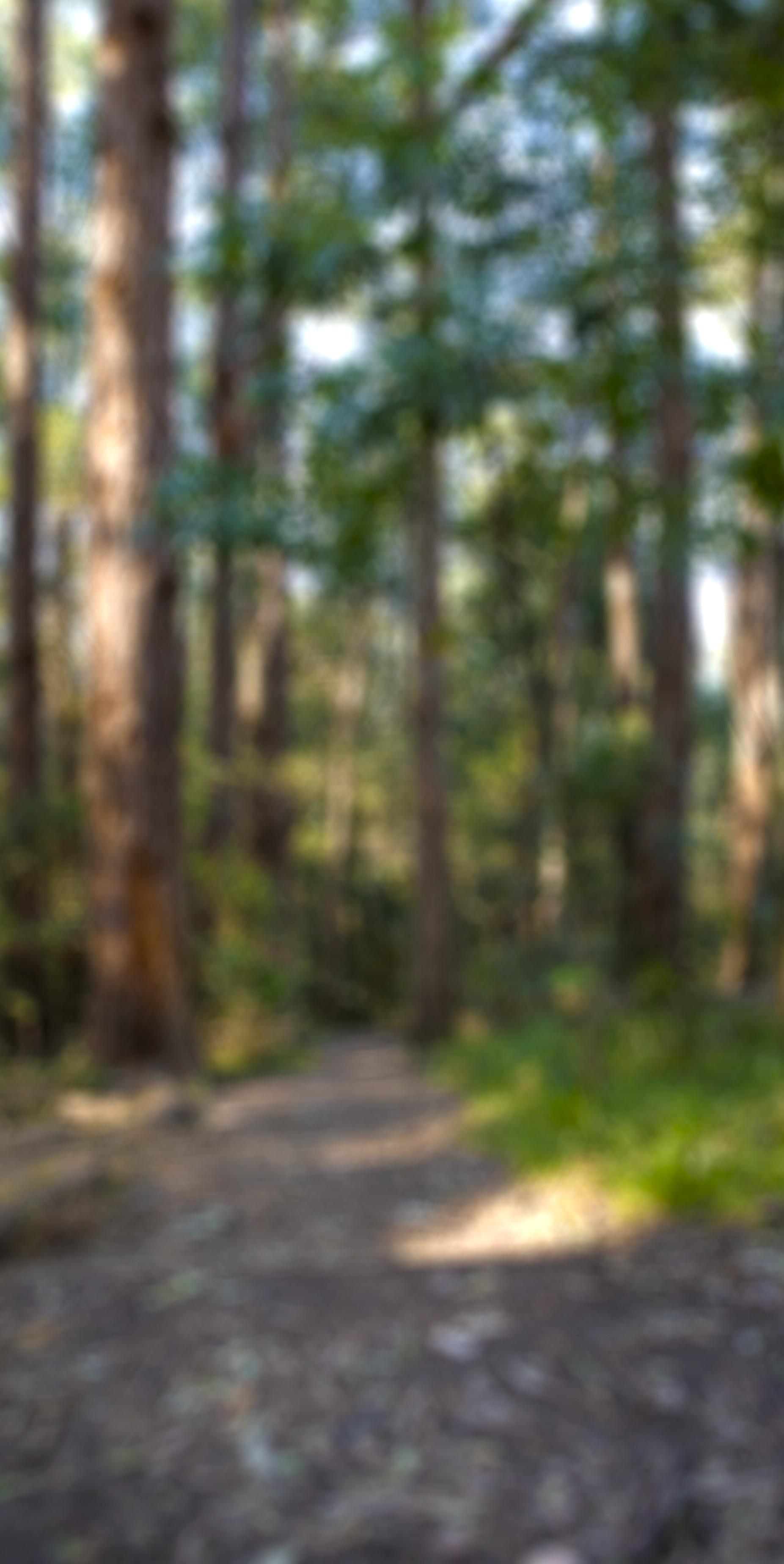
Forestry Corporation’s General Manager Ross Dickson said appointing Jamie was an integral decision made by the organisation to future proof their business.
“Technology – in terms of predicting fire behaviour – has come a long way,” Ross said. “The climate and mathematical models and computing capacity are actually allowing fire fighters to predict a great deal more than they used to be able to.
“The other important aspect of this conversation is early detection. For this organisation, early detection is so important. And, then a whole lot of other strategies, like suppression plans.”
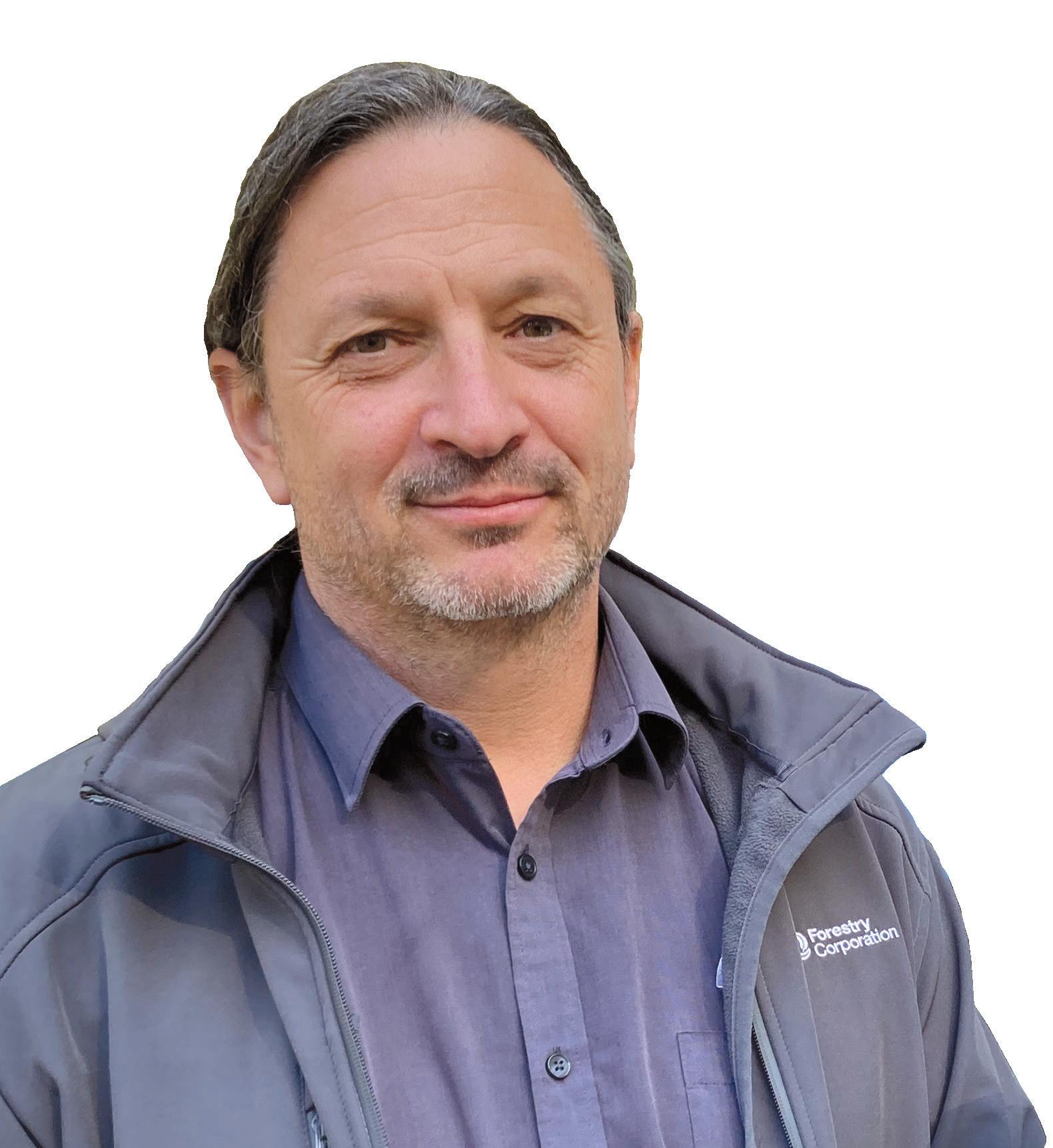
Jamie is tasked with refining Forestry Corporation’s early detection strategies, and its fire tower network has been an integral part of that.
“Around 80% to 85% of the area our fire towers overlook includes other public and private property,” Jamie said. “I did some research in the Bathurst region, and about 58% of the time Forestry Corporation’s fire towers called ‘000’ ahead of anyone else.
“All of that data analysis is really compelling, because it really shows the value Forestry Corporation provides to the broader community.
“We know that Forestry Corporation doesn’t have the resources to handle all fires on our own, and we rely on the RFS support that do have all the resources you need. That symbiotic relationship is very important for both of us.”
Jamie Carter brings important layers to Forestry Corporation through his former work with the NSW Rural Fire Service.
HEAVY PLANT KNOWLEDGE – great culture
Jamie says Forestry Corporation brings some serious skills to fire fighting.
“In my previous role with the RFS I dealt a lot with forestry people, and I consider forestry the leader in this state when it comes to the use of heavy plant and the construction of fire trails in the landscape.
“Forestry Corporation’s contractors work with heavy plant every day, and they work in the forest every day. They understand the forest, they understand the nature of the landscape and the terrain, and they understand how fire works because they’ve been looking at it for so long.
“We also have talented operators that can fell dangerous trees. So, forestry offers a very unique operational skill set, that should be acknowledged.
“I really like their expertise, their culture, and their pride in the forest.
“That’s what brought me to the organisation.”
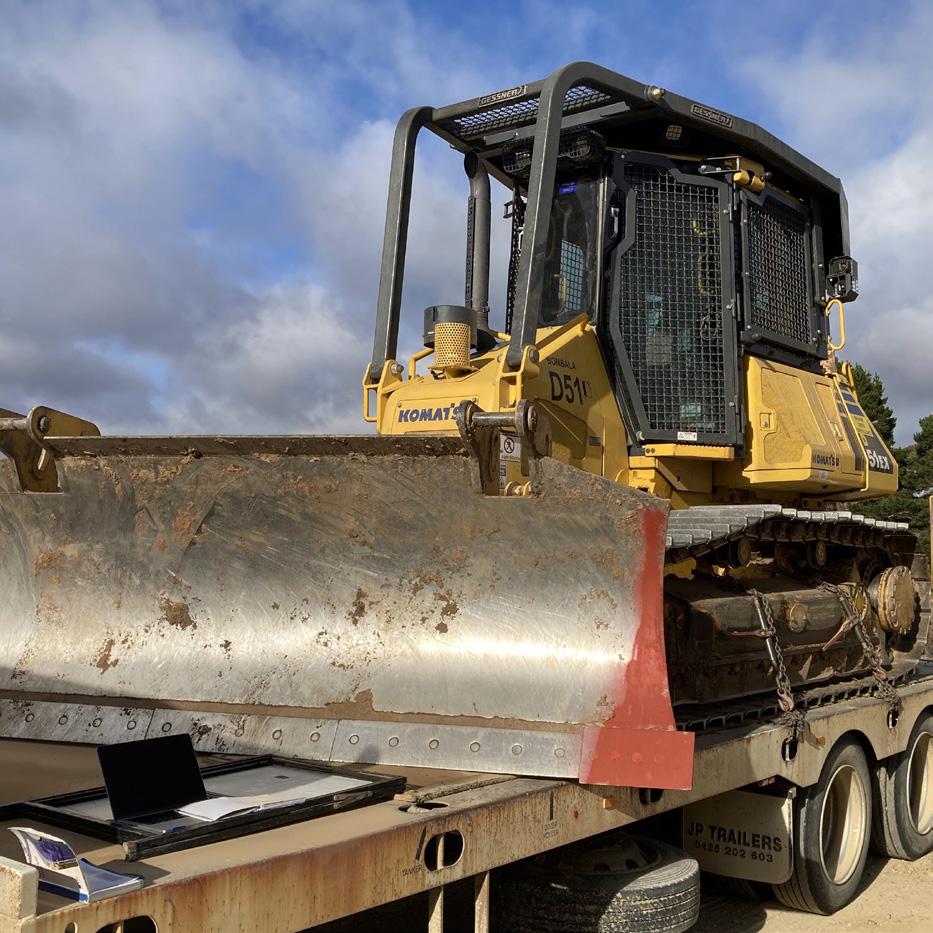
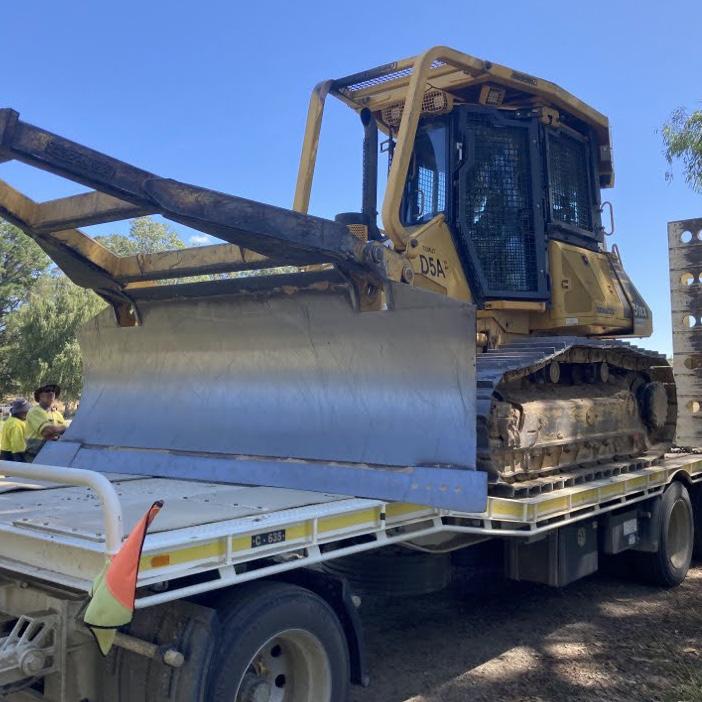
Forestry Corporation’s contractors bring unique operational skills to fire management which include heavy plant, the ability to fell dangerous trees, and extreme knowledge of the terrain. <
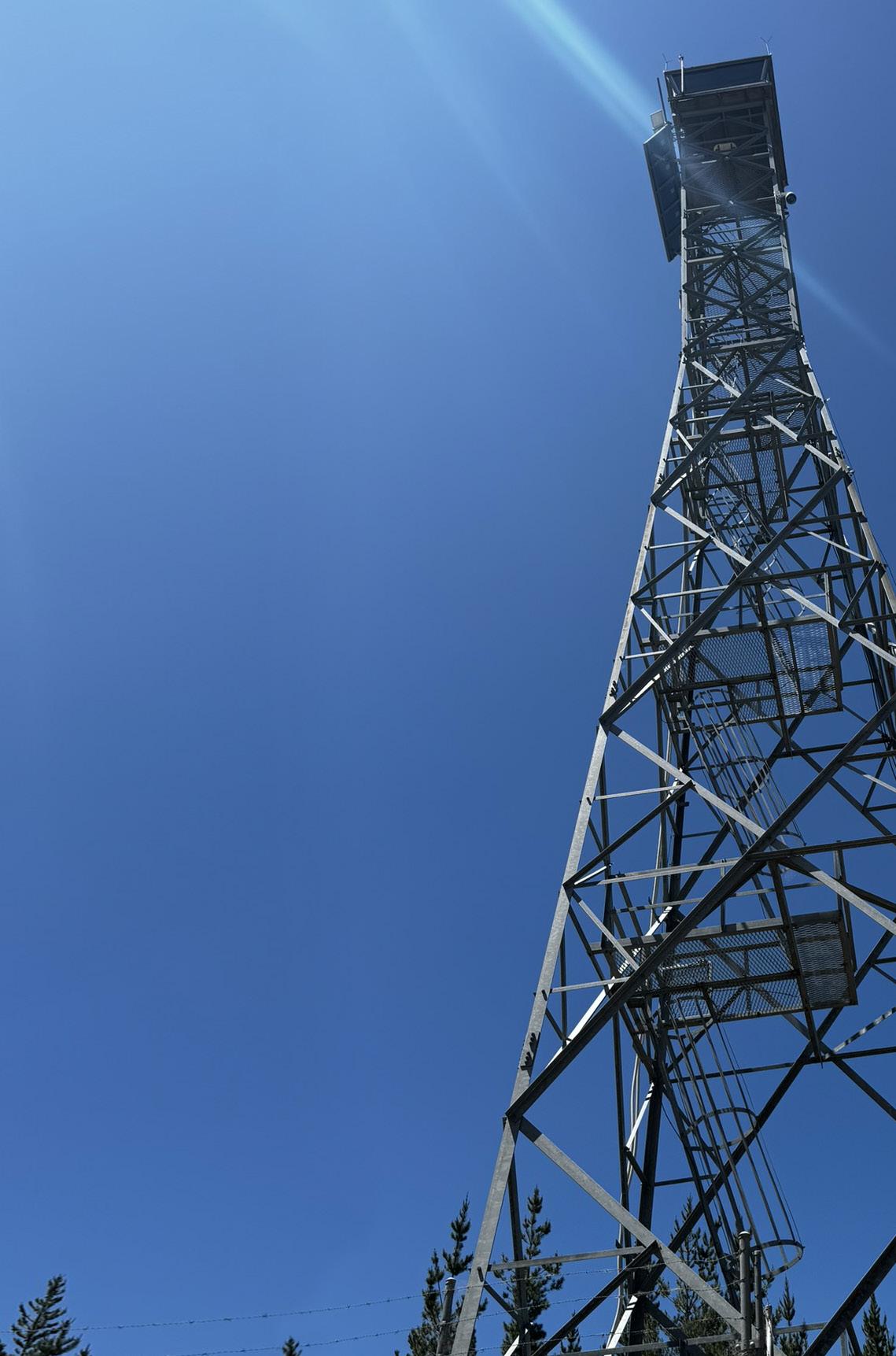
Fire towers vital

Data has shown that 58% of the time Forestry Corporation’s fire towers called ‘000’ to report a fire sighting before anyone else. It shows how valuable it is to have “eyes in the sky”, because roughly 80–85% of the area the fire towers overlook includes public and private property.
Fire towers have historically been critical in early fire detection. Spotting smoke in the distance kicks the fire response into gear.
While the towers have often saved the day, they aren’t staffed all season, during the night, or if the conditions are too dangerous. It means there are chunks of time where there are no eyes out there.
“Some of our biggest losses have come from fires that started overnight where the fire towers are unstaffed,” Jamie confirmed. “If you are not at the fire within 30 minutes of it starting in the pine plantation, as general rule of thumb it can already be more than five hectares in size and too large for you to be able to minimise that spread quickly.
“That’s why we are so focussed on having our resources on-scene at the ignition point within 30 minutes. The things that most commonly cause ignitions are lightning, stolen or dumped cars being set on fire in the forest, or landholder burns that are close to the forest and escape.”
The other challenge is how long fire takes to show itself, and how established it is by the time it does.
“The lightning might strike in the afternoon, but the fire might not show until a couple of hours later. Dumped cars are often dumped at night because that’s when those events happen. Landholder burns are sometimes not monitored as much during the nighttime as the day.
“For example, the Dunns Rd fire in 2020 was ignited from a lightning strike and it burned 334,000 hectares. The Billo Rd Fire in 2006 was also a nighttime lightning strike ignition that took out 10,000 ha of pine. Between those two fires $400 million dollars of loss was sustained from fires that started at night when the fire towers were not operational.
“When fire towers are operational, we generally always find and suppress the fire, and we’re always considering new technology that can bolster those efforts.”
Satellites and cameras coming along
To that end, the next generation of firefighting assets are now being explored.
“We’ve looked at both satellite technology and automatic detection cameras. Satellite technology is interesting, and it holds a lot of promise. But it has one very significant limitation which is the number of satellites and the amount of time they spend over Australia,” Jamie said.
“At the moment, the fleet of different satellites that would get used for this kind of detection pass over the country at certain times, but they leave very large time gaps (eight hours) in between satellite passes – which for our softwood plantations – is not particularly useful.
For our remote inland areas – that cover a huge amount of territory and have a sparse employee network – the satellite technology is actually quite good. But, in our softwood and hardwood plantations, it’s just not there yet at a commercial level.
“It will improve. We are doing some work with Ororatech (slowly building satellite network over time) and we have high hopes that in five to 10 years that becomes an important tool in the toolbox. Right now, it’s not something we can discount, but we also can’t rely on it.”
Cameras are another consideration.
“This is a really interesting space. It’s quite well developed overseas in parts of South Africa, the US, and parts of Europe. There is a lot of artificial intelligence involved in the way they work. They sweep the landscape and they register what it looks like at that time [hazy, misty, or clear], and on subsequent sweeps they assess that landscape for any change in colour.
“When a column of smoke appears, it changes the colour of those pixels on the camera and the camera realises
something has changed, and this could be a potential fire.
“That technology has to be trained for local conditions. So, while we are quite well developed in camera technology in other parts of the world, it’s fairly new to Australia and because it is an emerging technology it’s very much driven by the private sector at the moment.”
Jamie said companies, including Forestry have spent significant time training the technology for Australian conditions.
“It is an ongoing process, and you have to accept your part in the role of that training. We’ve been trialling it since 2021 with a couple of different providers. We want to assess its usefulness, its potential role in our business, its limitations and how we wanted to use that technology to support our business.
“Where we’ve got to is that we absolutely recognise there is a role for this technology in our suite of early detection work. But it’s not yet at the place where it can replace a human being in a fire tower. And, this is a finding that other forest growers in Victoria and South Australia have also found.”
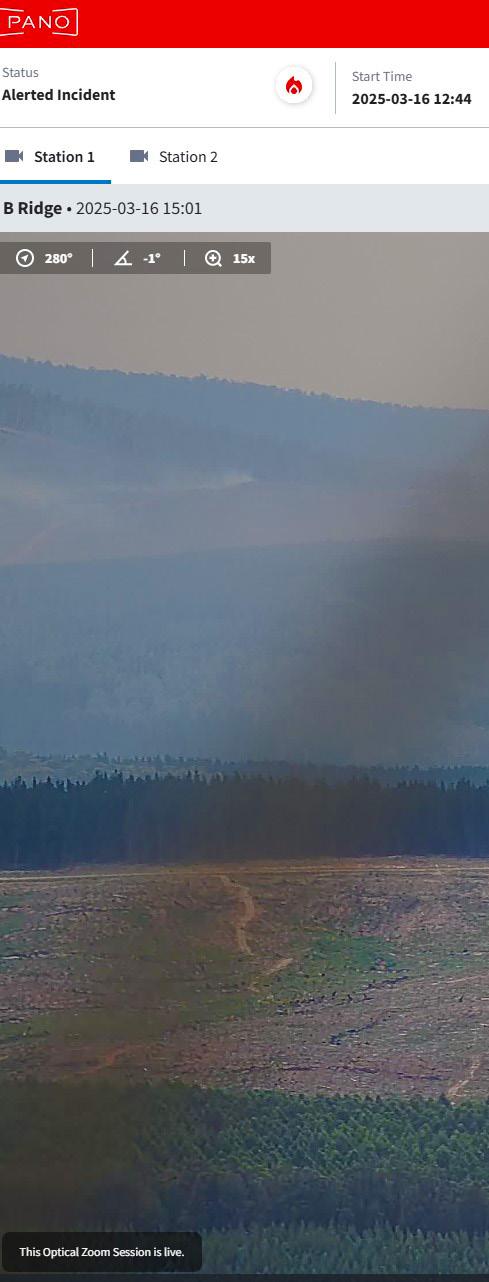
We’ve looked at both satellite technology and automatic detection cameras. Satellite technology is interesting, and it holds a lot of promise...
– Jamie Carter
While cameras hold promise, humans remain critical.
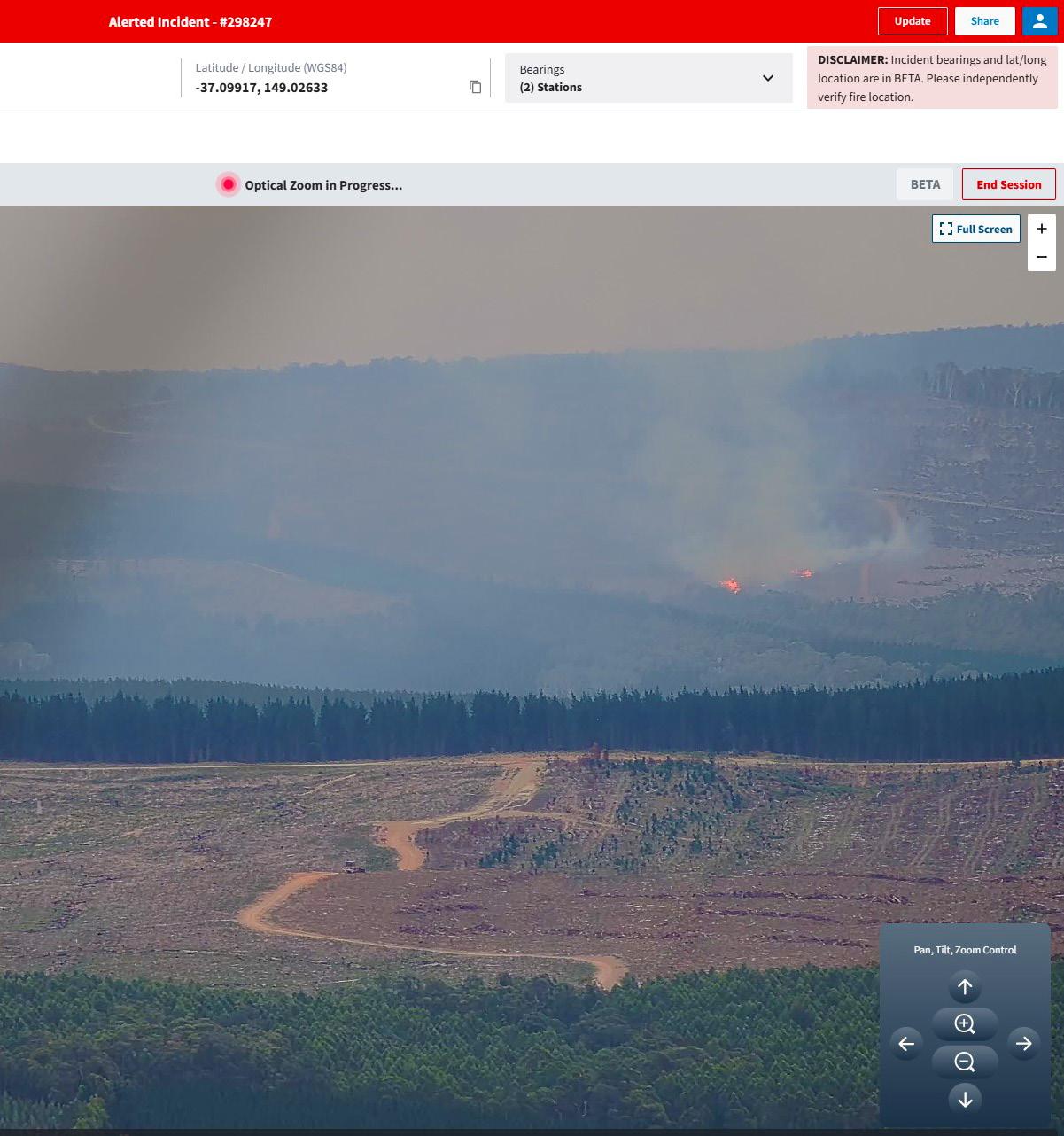
To that end, the power of the people remains critical.
“Because when you pull the data apart, it shows that about 40% of fire detection is still found by a human in a tower first. A human being who knows the area, who has been looking for fire for 15 to 20 years will have a much quicker response to a smoke sighting in knowing exactly what it represents. They also typically know the landscape really well too, so they can pinpoint where the fire is.”
“If we have a person in a tower right now within a few minutes of detection, resources can be deployed. With the cameras there are some issues in that the camera notices something, but that could dust from a car or lime spreading. So, it goes through a filtering process which means someone must analyse it.
Technology has to be trained for local Australian conditions and the Forestry Corporation is proactively supporting that work.
<
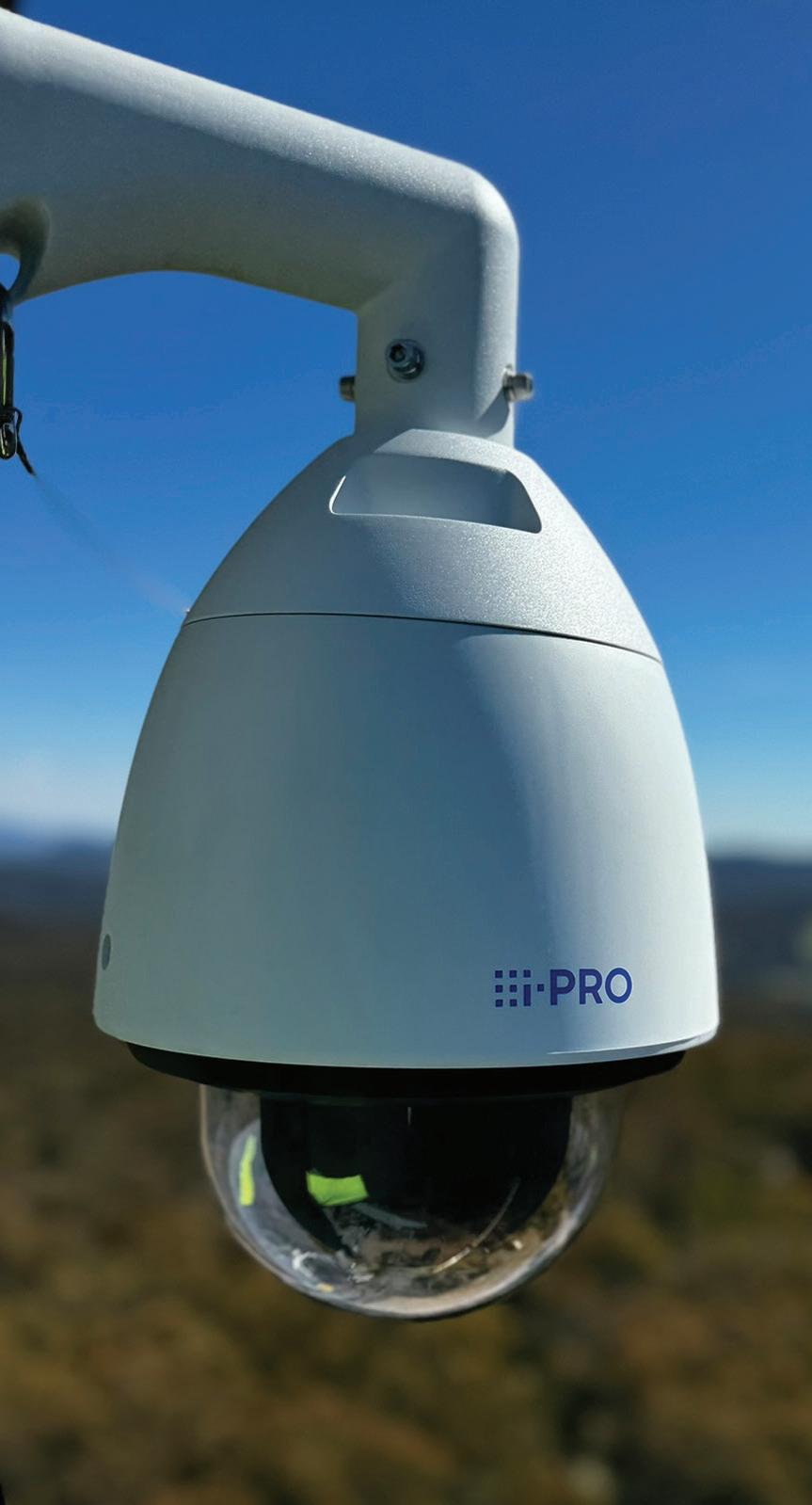
“With a person in a fire tower, that analysis happens intrinsically. They know it’s fire without having to think about it. That delay with the camera is unacceptable to us on bad days.”
We have to accept that’s a risk with that technology. For me, there is a lot of work to do. It’s not simple to find how camera technology can feed directly into dispatch arrangements, and how we streamline the whole process across the boundaries of the organisation.”
Early detection
–
rapid response
The key words in keeping fire out of the forest remains early detection and rapid response.
Jamie said there is a crossroads for this work –where Forestry Corporation must decide how deep it wants to go.
“Camera detection holds a lot of promise for us. I’d love to see a hybrid approach between smart fire towers and camera technology and an investment in a fulltime remote camera network.
“Technology is expensive. We need to look at how we can help develop the technology to help make it more cost effective over time. That investment is commensurate with the potential loss of a softwood plantation.
“We might spend $1.5 million a year on cameras. On average over the last 20 years, we’ve lost much more than that in terms of losses across the landscape. Over the last 20 years, Forestry has lost $10 million to $15 million dollars a year, on average. One complication is that the loss can be minimal for quite a few years, until you get a bad season and then those losses increase significantly.
“The last three years have been much better, but the year before we lost $150 million dollars. We are going to realise the benefit of the investment in cameras every 20 years – not every year.
“That’s the trick, it’s a significant investment and you have to match the solution to the type of risk you’re trying to manage.
“That’s a big part of getting it right.” ■
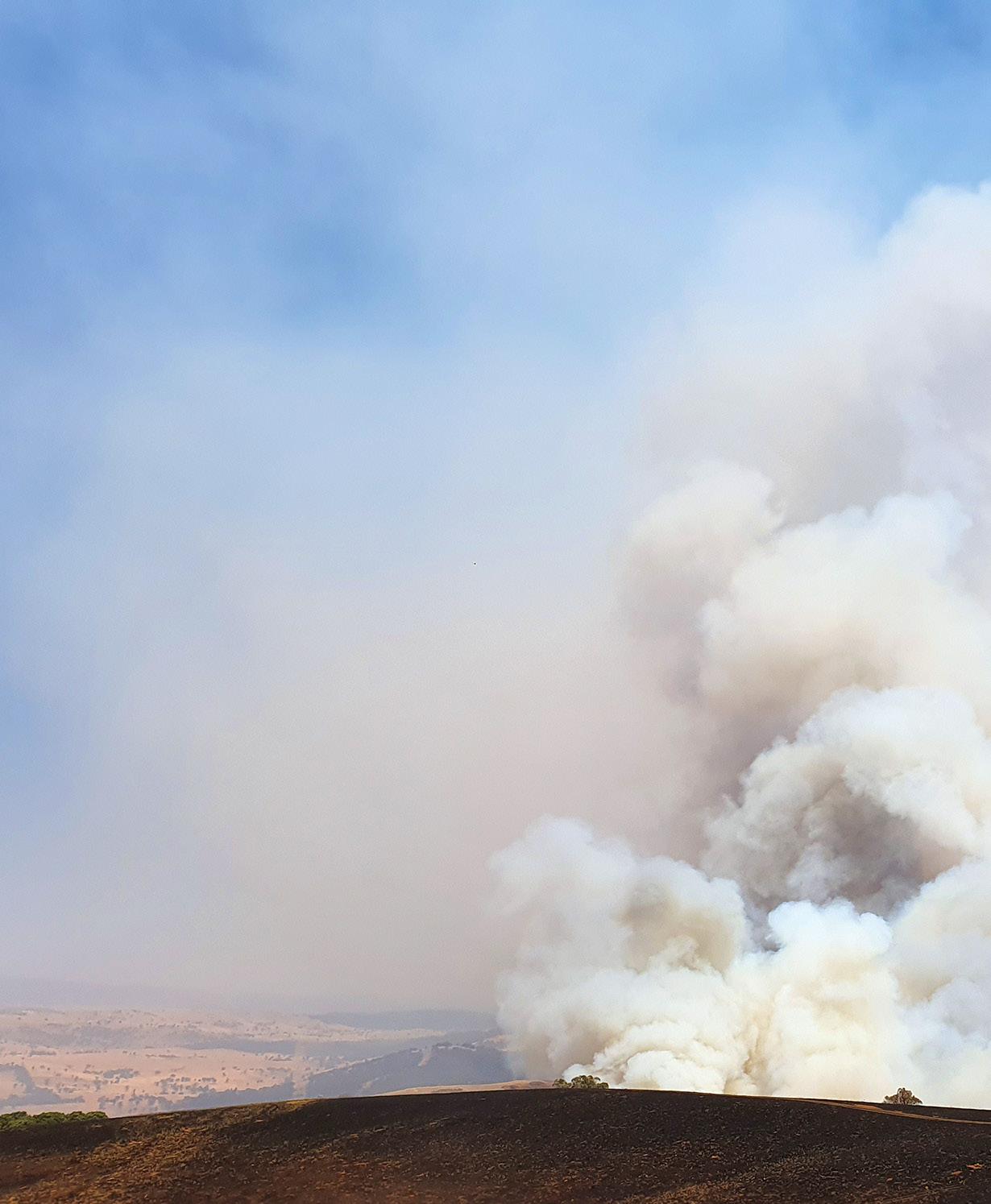
That’s the trick, it’s a significant investment and you have to match the solution to the type of risk you’re trying to manage.
– Jamie Carter
